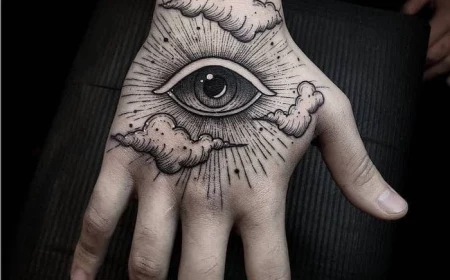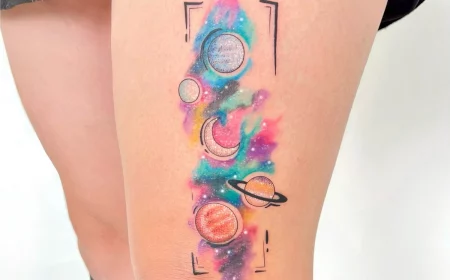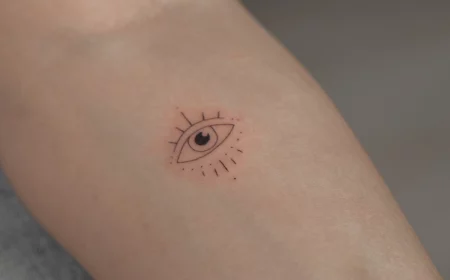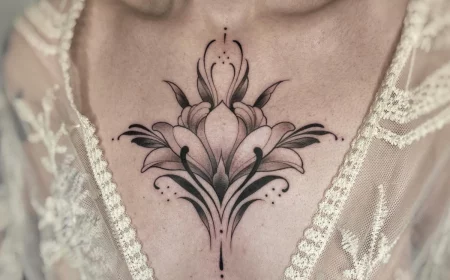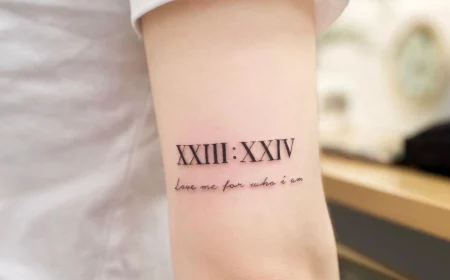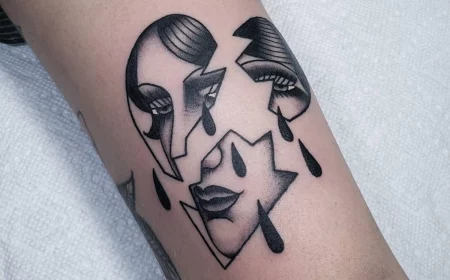Thinking About a Couple’s Tattoo? An Artist’s Unfiltered Guide
After countless hours with a tattoo machine in my hand, I can tell you one thing for sure: the request for a couple’s tattoo is timeless. I’ve seen the spark in the eyes of new lovers and the quiet understanding of partners who’ve shared a lifetime. Getting a permanent symbol of your connection is a powerful, beautiful idea. My job isn’t to talk you into it. It’s to make sure you walk in with your eyes wide open, so the art we create is something you’ll both love forever, not just for now.
In this article
Honestly, this is so much more than just pointing at a picture you found online. It’s about understanding what a tattoo actually is—part art, part minor medical procedure, and a lifelong commitment. So let’s just talk, you and me. I want to share the real-deal insights I’ve picked up, so you can make a choice that feels right.
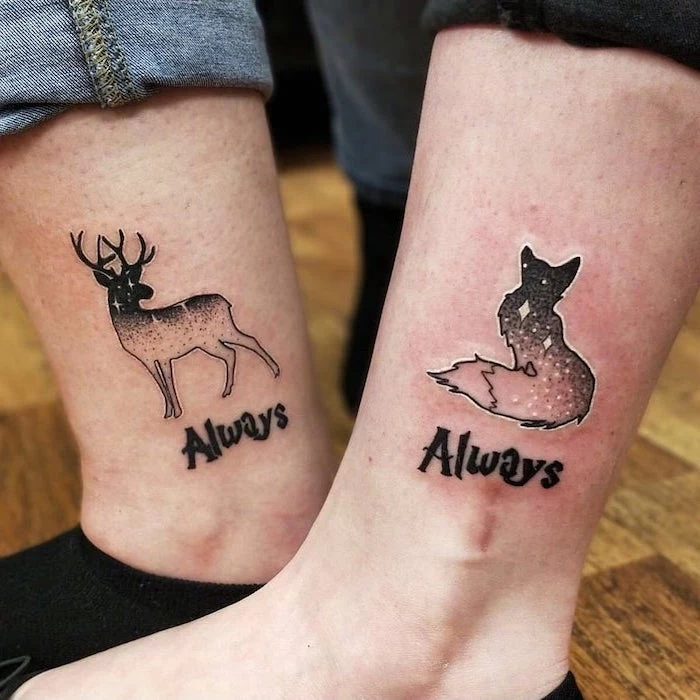
First, Let’s Talk Skin: Your Living Canvas
Before we even dream about designs, we have to get real about your canvas. Your skin is a living, breathing organ that changes over time. It stretches, it ages, and it gets a lot of sun. A tattoo that looks razor-sharp on day one will inevitably soften over the years. Understanding why is the key to picking a design that lasts.
Think of your skin in layers. The top layer, the epidermis, is constantly shedding. If we put ink there, your tattoo would literally flake away in a few weeks. The magic happens in the dermis, the stable layer just beneath. When a tattoo needle deposits ink into the dermis, your immune system rushes in. Little cells called macrophages try to ‘eat’ the foreign ink particles to clean them up. But—and this is the cool part—the ink particles are too big for them to get rid of. So these cells just hang out in the dermis, full of ink, for the rest of your life. That’s your tattoo.
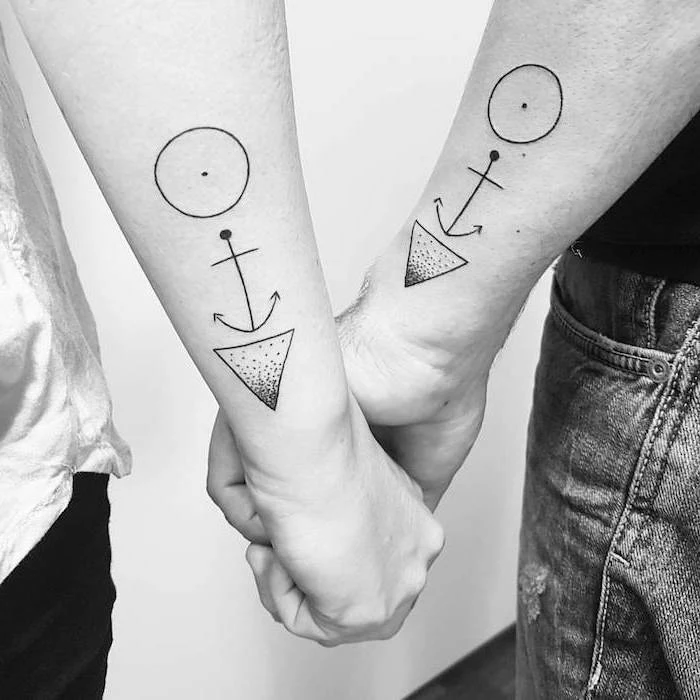
But over decades, those cells can shift or die, and the ink can spread out a tiny bit. This is why super-fine lines tend to get a little thicker and bolder over time. It’s why a very small, intricate design can soften into a blur. Sun, friction, and your own biology all have a say. Heads up: A delicate, dime-sized heart on your finger looks amazing at first, but it’s a high-motion, high-exposure area. In five years, it’s very likely to be a soft, faded little blob. For a design that holds its integrity, think quarter-sized or larger for simple shapes, especially on hands, feet, or wrists.
Okay, But How Much Will It Hurt?
Let’s just get this out of the way. Yes, it hurts, but it’s probably not as bad as you think. Pain is super subjective, but there are some general rules of thumb. Fleshy, padded areas are usually the most comfortable spots. Think outer thigh, forearm, or bicep—these are maybe a 3 or 4 on a 1-10 pain scale. Annoying, but totally manageable.
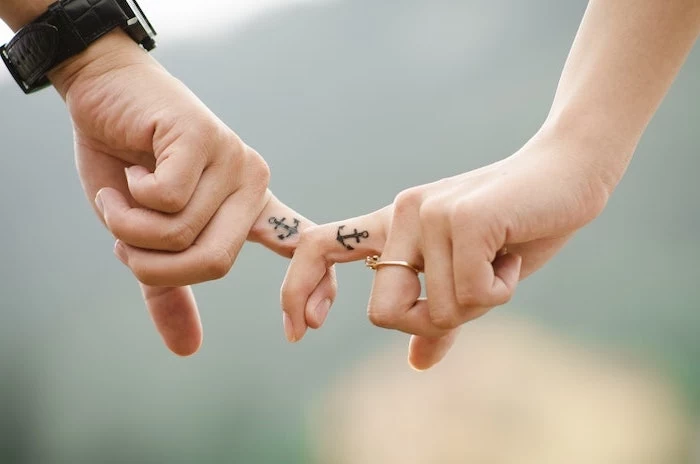
Now, the bony spots are where it gets spicy. Ribs, spine, feet, and sternum? That’s where you’re getting into the 7-to-9 territory. It’s intense, but a good artist works fast in these areas. By the way, fingers and hands can be surprisingly painful because of all the nerve endings, but the good news is that tattoos there are usually small and quick. Just remember, a tattoo that hurts more isn’t ‘better’—choose a placement you love and that fits your pain tolerance.
Designing Something That’s Actually You
The best couple tattoos I’ve ever done were never the trendy ones. Forget the matching king and queen crowns for a second. The most meaningful designs come from your unique story.
I always give couples a bit of homework. Take a few minutes and each of you make two separate lists. On the first, list shared memories, passions, and inside jokes. The cafe where you had your first date, the first concert you saw together, that weird hobby you both geek out on. On the second list, write down shared values. What’s the glue that holds you together? Adventure? Loyalty? A sense of humor?
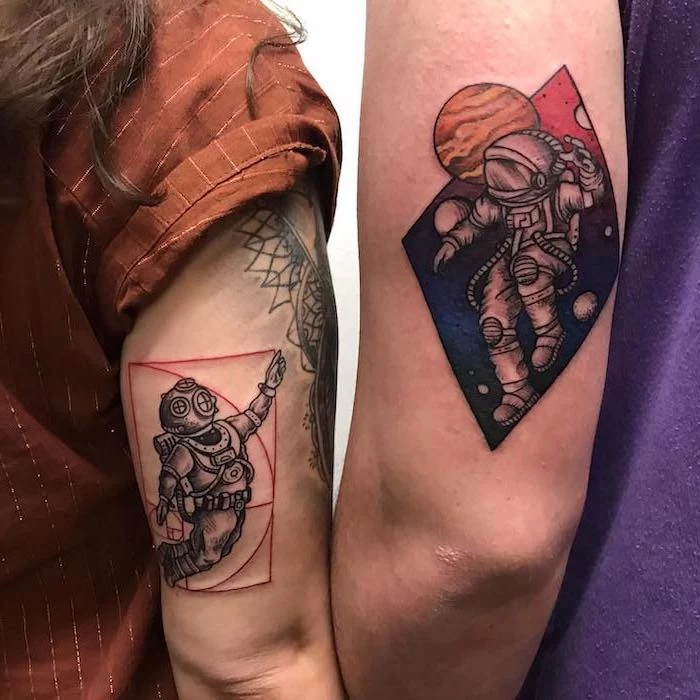
Okay, you got your lists? Now look for the visuals. Instead of the date you met, what about a tiny, stylized version of the flower that was blooming that day? Instead of a generic anchor, what about two small compasses, each pointing to a coordinate that only you two understand? I once tattooed a couple who loved to cook together. He got a small whisk on his forearm, she got a matching spatula. It was subtle, personal, and 100% them. A lesser-known trick: try to pick something that can also stand alone beautifully. A sun on one person and a moon on the other, for example. Each is a complete tattoo on its own, but together, they tell a richer story. This is a great way to honor both the partnership and the individual.
Finding Your Artist and Studio
This is the most important decision you’ll make. A great artist in a clean studio is non-negotiable.
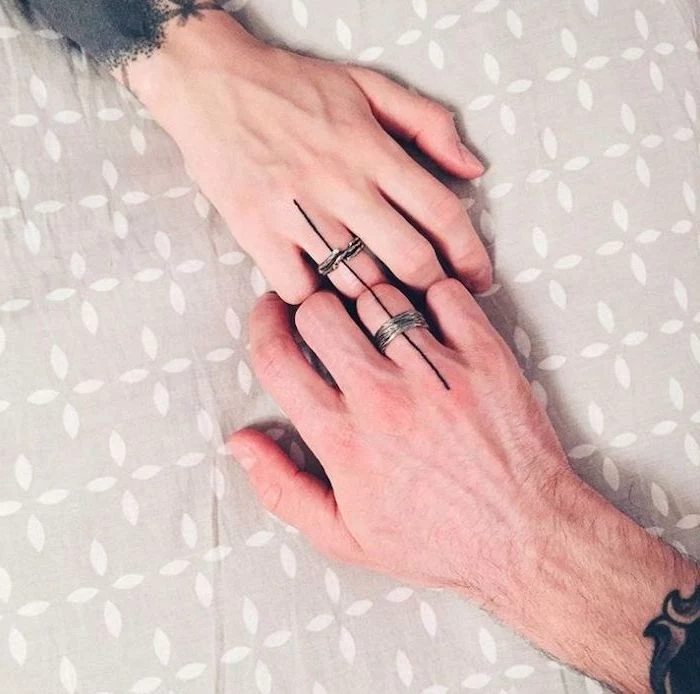
First, where do you even look? Instagram is your best friend here. Start searching hashtags like
[yourcity]tattoo,
finelinetattoo, or #traditionaltattooartist. Scroll through the work. Do you see the style you’re looking for? Does their linework look clean and confident? When you find an artist you like, look at their whole portfolio, not just one picture.
When you walk into a studio for a consultation, it should feel as clean as a doctor’s office. Look for health department certificates on the wall. A pro shop will have an autoclave for sterilizing equipment—ask to see it! All needles must be single-use and opened from a sterile package right in front of you. Everything the artist touches, from their machine to their spray bottle, should be covered in a disposable plastic barrier. Seriously, a cheap tattoo from someone’s basement is never worth the risk of a nasty infection.
Let’s Talk Money & Etiquette (The Stuff No One Tells You)
It’s weird how secretive the cost of a tattoo can feel. Let’s demystify it. Most professional shops have a shop minimum, which is the absolute lowest price they’ll charge for any tattoo, even a tiny dot. This covers the cost of sterile supplies, the artist’s time, and setup. Expect this to be anywhere from $80 to $150. For larger pieces, artists typically charge an hourly rate, which can range from $150 to $300+ depending on their skill and demand.
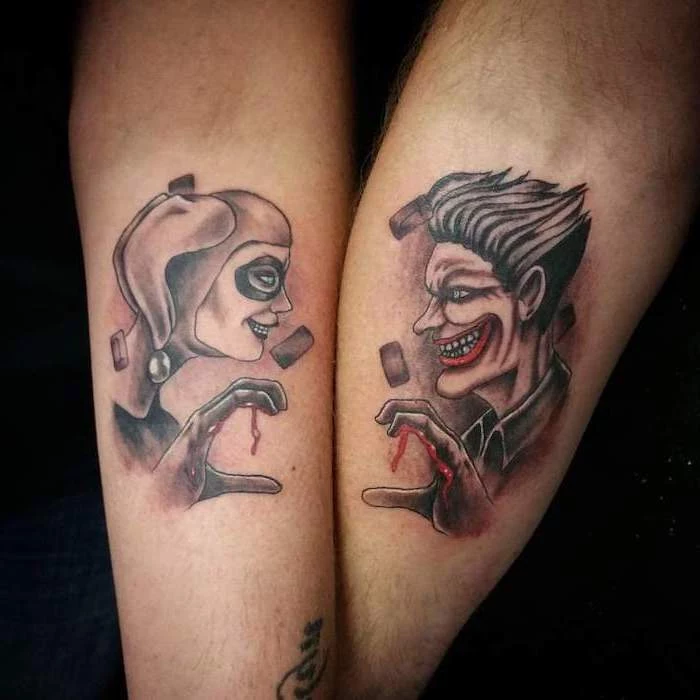
Good to know: a consultation to discuss your idea should almost always be free. It’s your chance to vibe with the artist and their chance to give you a solid price quote so there are no surprises.
And once you’re there, a little etiquette goes a long way. Show up on time, sober, and having eaten a decent meal. Don’t bring a huge entourage—most shops only have room for you and maybe one friend for support. And finally, if you love your tattoo and your experience, it’s customary to tip your artist. Just like in other service industries, 15-25% is a great way to show your appreciation for their skill and effort.
Aftercare: Now It’s Your Job
Once you walk out of the studio, that tattoo’s future is in your hands. I’ll usually put on a clear, adhesive bandage that can stay on for three to five days. It protects the fresh tattoo and helps it heal.
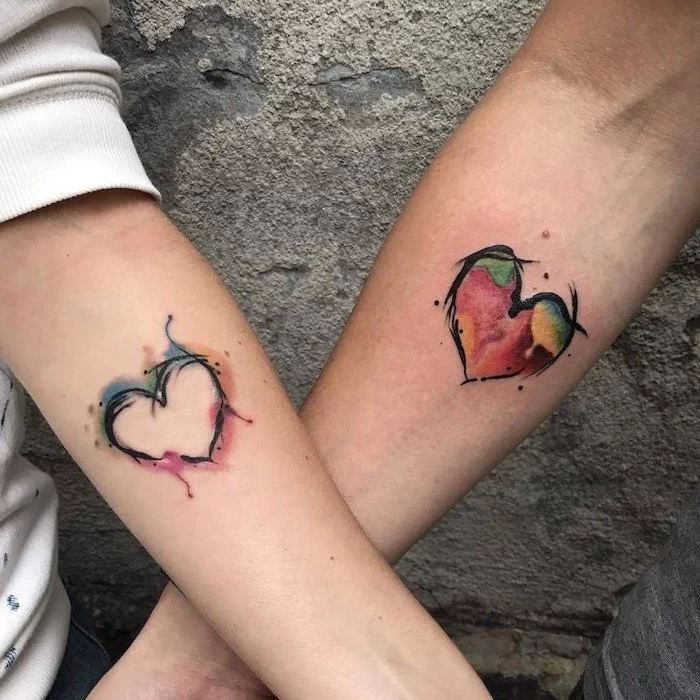
After the bandage comes off, it’s simple. Gently wash the tattoo 2-3 times a day, pat it dry with a paper towel (not a cloth one!), and apply a very thin layer of lotion. Keep it clean and lightly moisturized. That’s it. For at least two weeks, no soaking in baths, pools, or hot tubs. Your tattoo will peel and flake like a sunburn—do not pick at it! Let it do its thing.
Here’s a quick shopping list to make it easy:
- Mild, Unscented Soap: Dial Gold is a classic choice. You can grab a bottle for about $5.
- Unscented Lotion: A basic bottle of Lubriderm, Aveeno, or a tub of Aquaphor works perfectly. This will run you about $10.
- Paper Towels: You probably already have these at home.
The Hard Conversation: Cover-Ups and Laser Removal
Okay, deep breath. We have to talk about this. I’ve done my fair share of cover-ups on old couple tattoos. It’s just a reality, and being practical doesn’t mean you’re not committed.
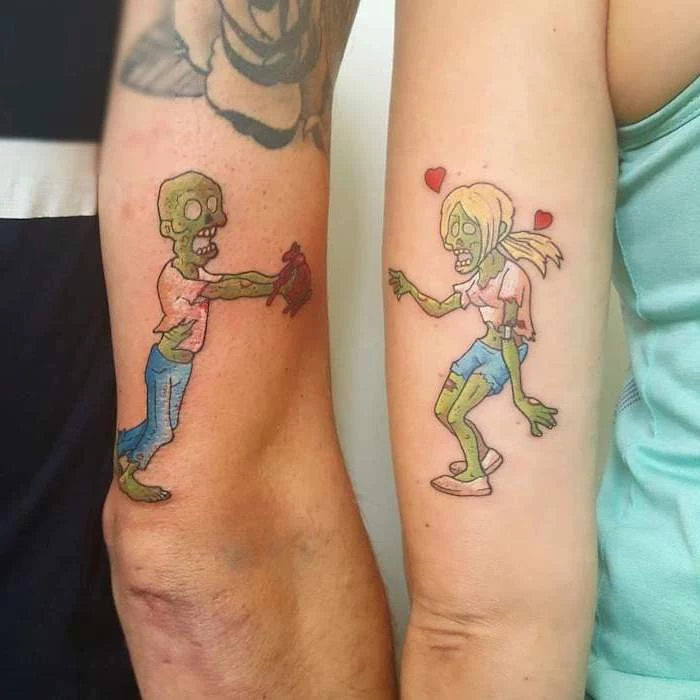
Covering an old tattoo isn’t like painting over a wall. The new design has to be much larger and darker. Black is the hero of cover-ups; light colors like yellow or pink won’t hide a thing. Your options get limited by what’s already there. This is a huge reason why I always steer couples away from names and portraits.
And what about laser removal? It’s not a magic eraser, folks. It’s a long, often painful, and very expensive process. Expect to pay anywhere from *$200 to $500 per session,* and you could easily need 8-12 sessions spaced months apart. You’re talking thousands of dollars and a year or more of your life to fade a mistake. Even then, you might be left with a faint ghost of the old design.
A couple’s tattoo can be an incredible testament to your bond. I once tattooed a small, detailed oak tree on a husband and a matching one on his wife of forty years. It represented the strong, rooted family they had built. That’s the goal. So take your time, do your research, and create something that will make you both smile for decades to come.
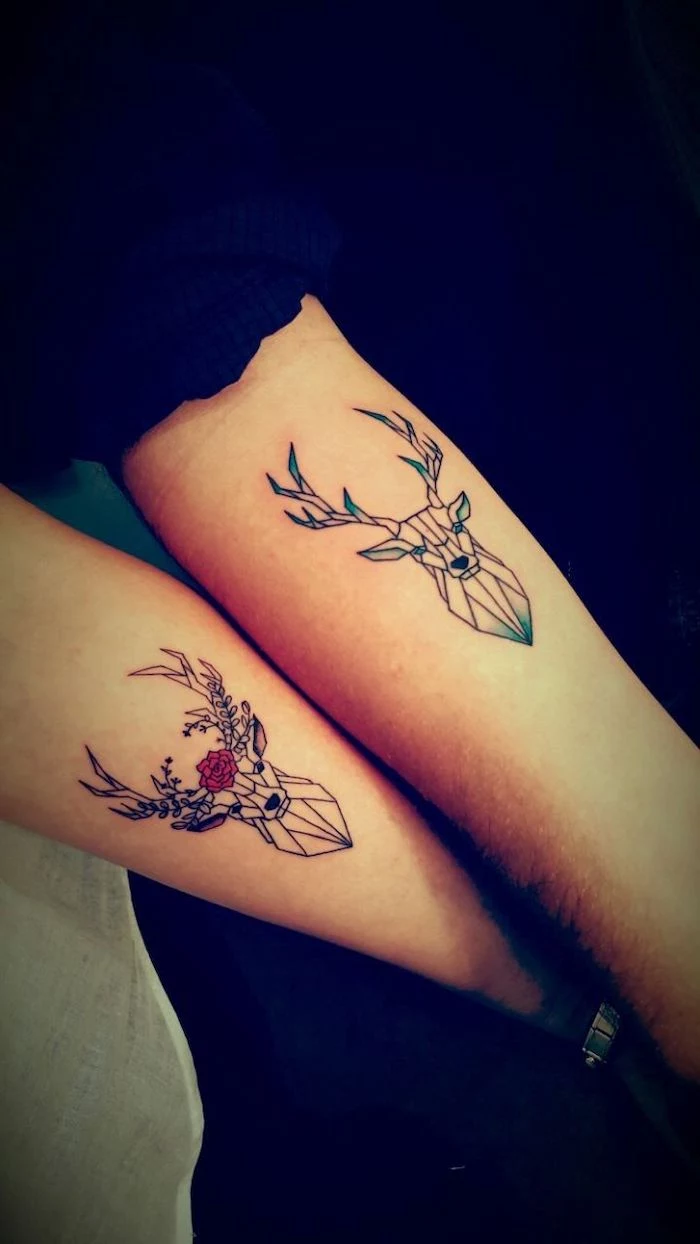
Inspiration Gallery
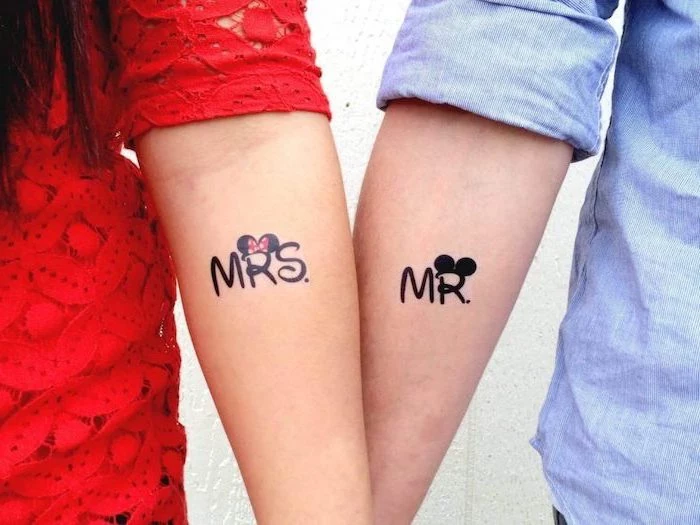

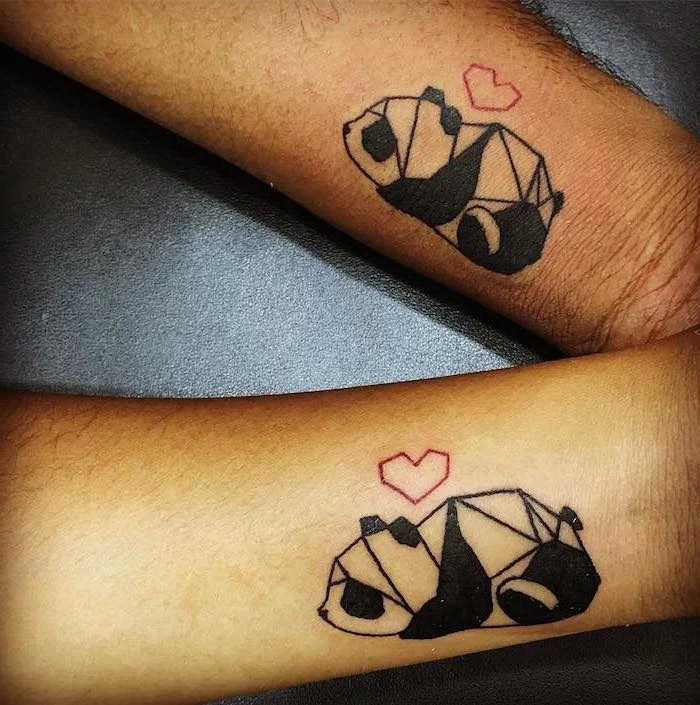
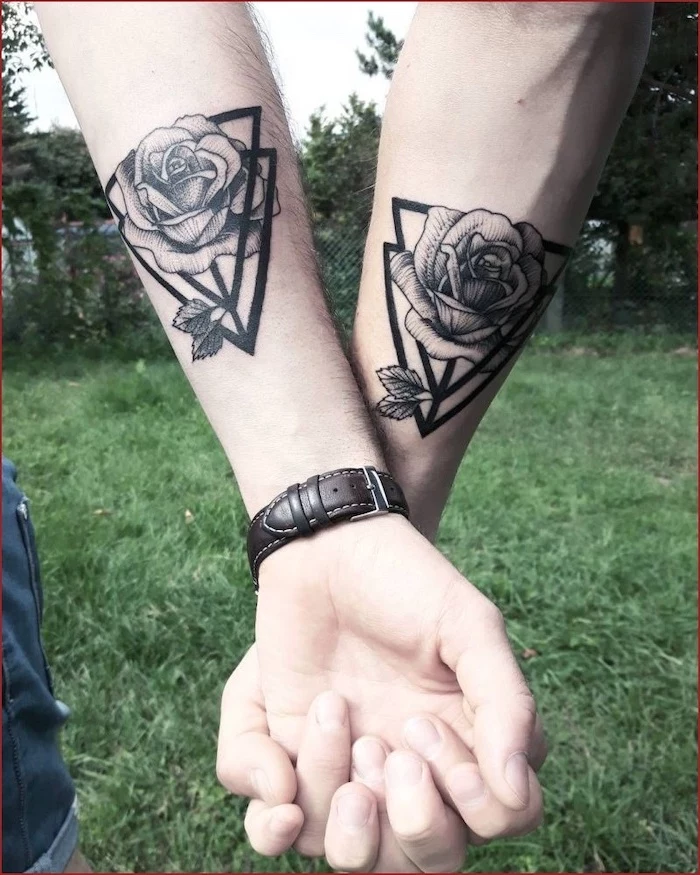
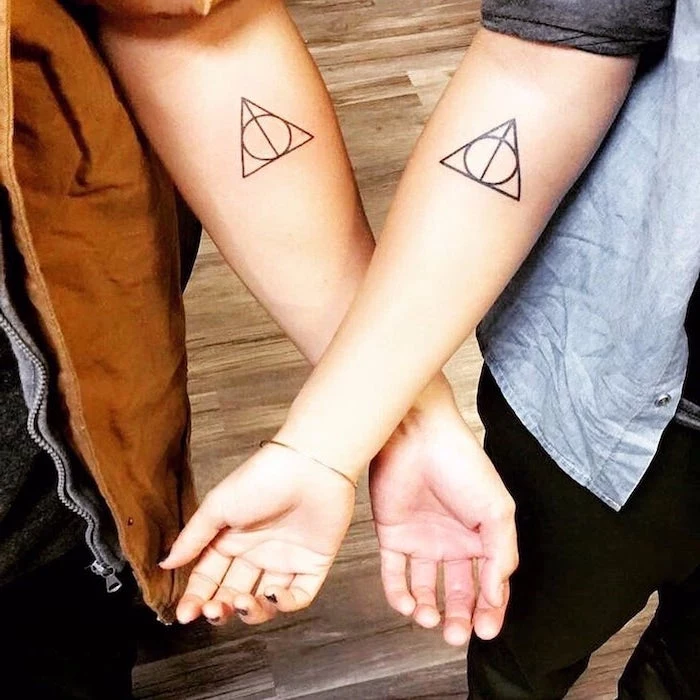
Think Complementary, Not Just Identical. Instead of two identical puzzle pieces, why not be the two different pieces that fit together perfectly? One of you could have the sun, the other the moon. One gets the lock, the other the key. This approach allows for individual expression while still celebrating the shared connection, often resulting in more artistic and personal tattoos.
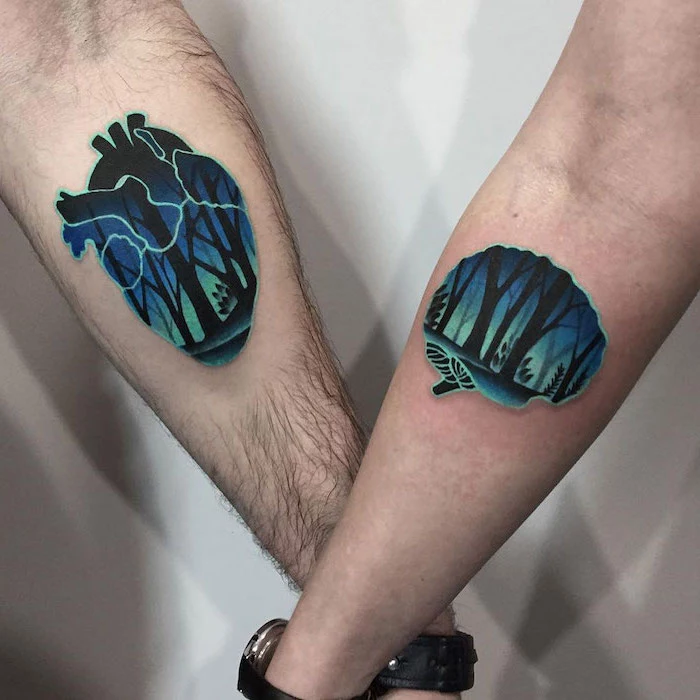
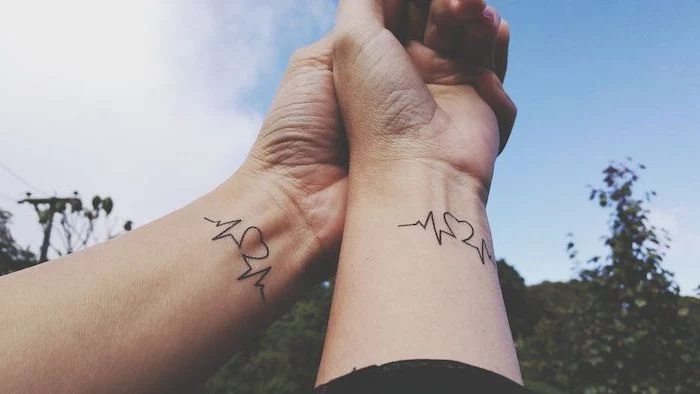
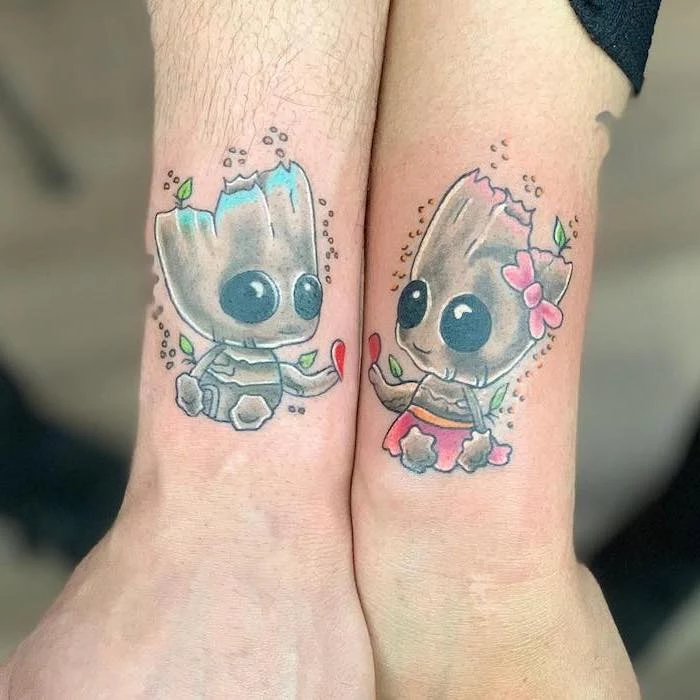
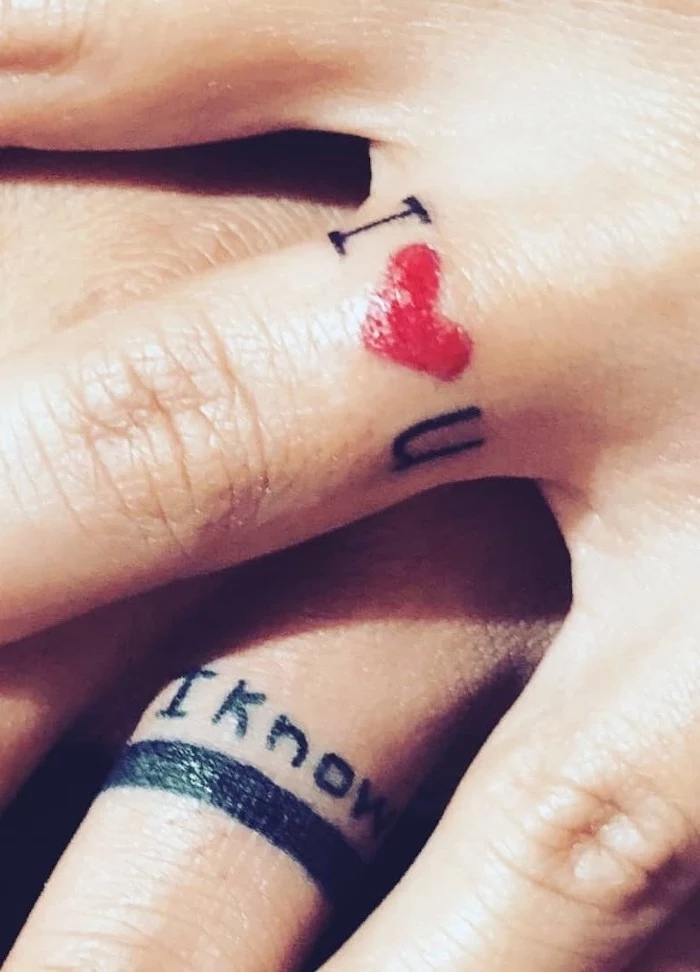
- Check their portfolio specifically for fine-line or minimalist work if that’s your style.
- Ask how they approach creating custom designs for two people.
- Discuss scheduling to get tattooed together or back-to-back.
- Be clear about your budget for both tattoos upfront.
The key? Go to the consultation together. The artist’s vibe should feel right for both of you.
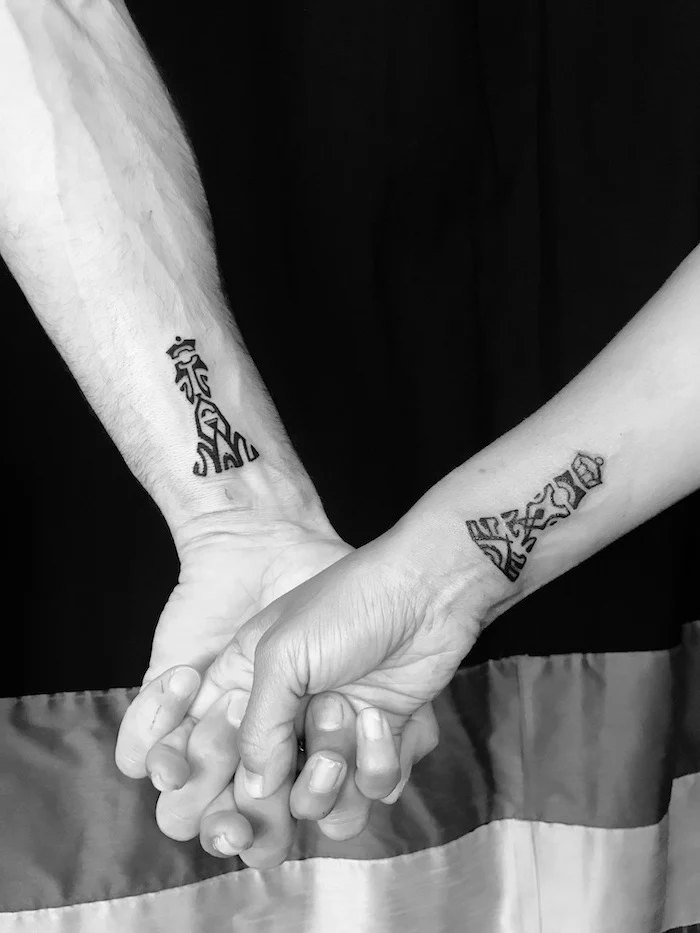
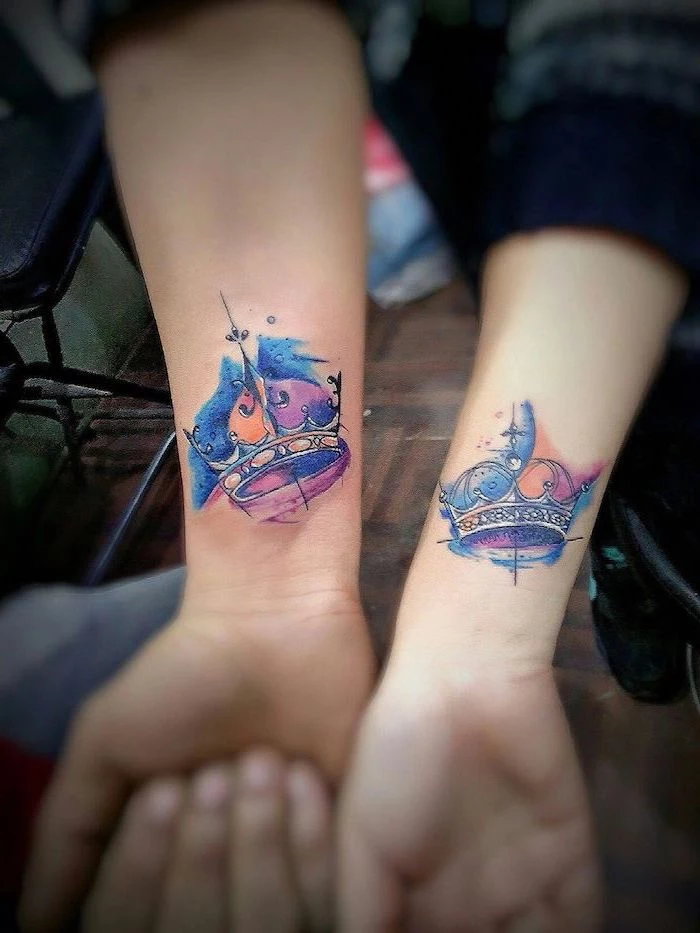
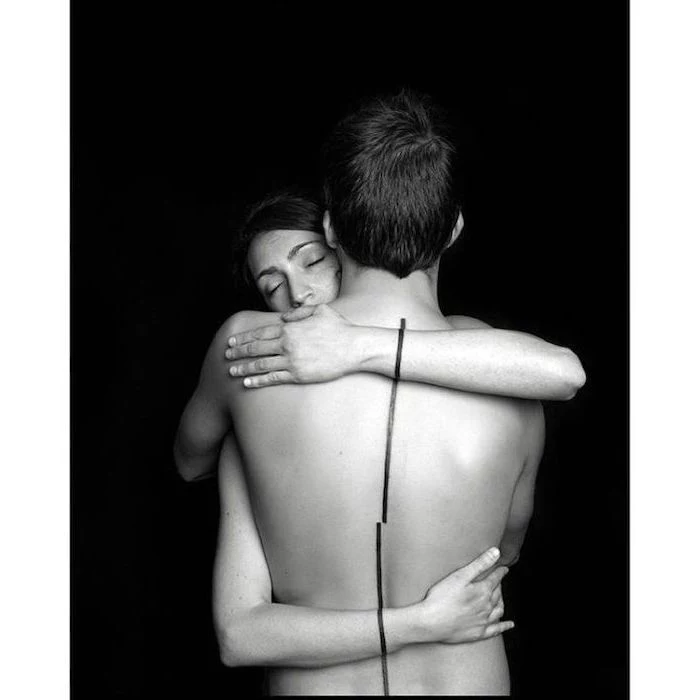
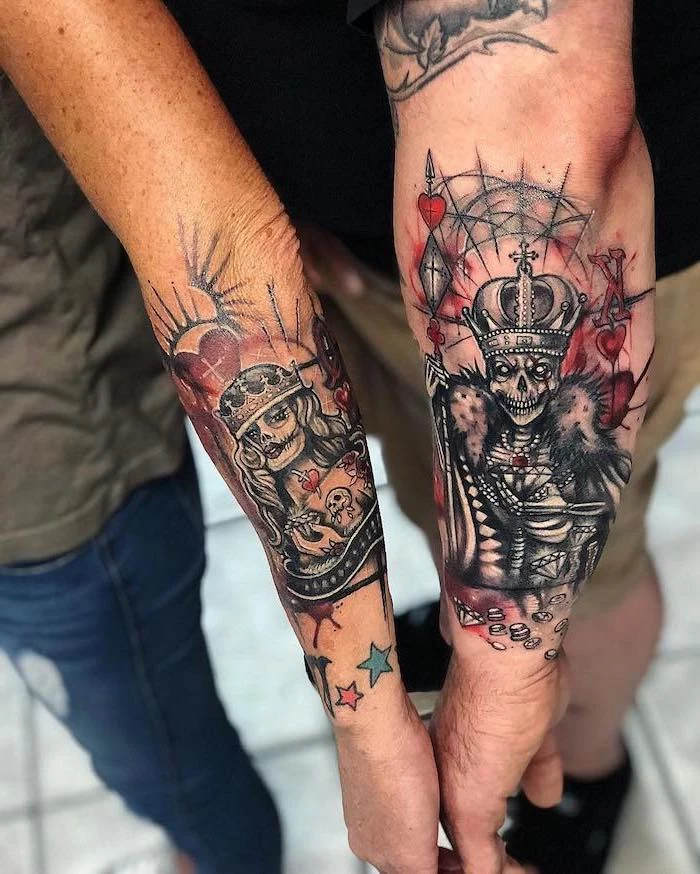
An estimated 78% of tattoo inks used in the EU contain at least one substance of concern, which is why REACH regulations were updated in 2022 to ban certain pigments.
This doesn’t mean your tattoo is unsafe, but it’s a great reason to choose an artist who uses high-quality, compliant inks from reputable brands like World Famous, Intenze, or Eternal Ink. A professional artist will always prioritize your safety and the quality of their materials.
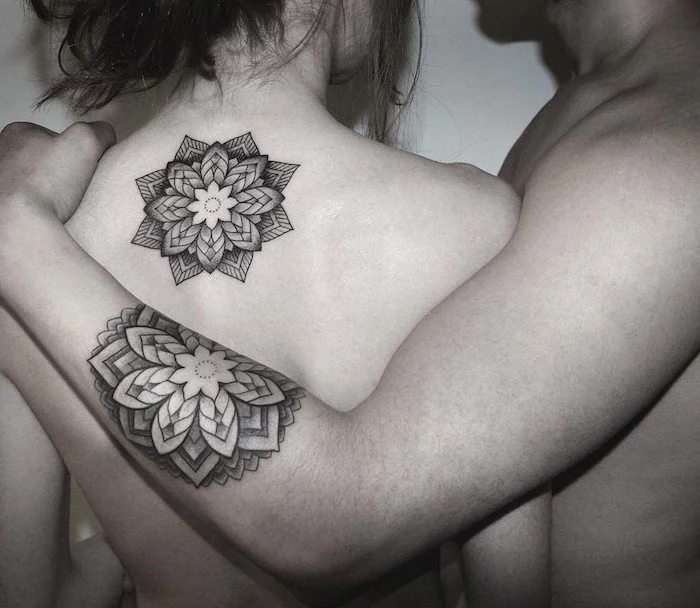
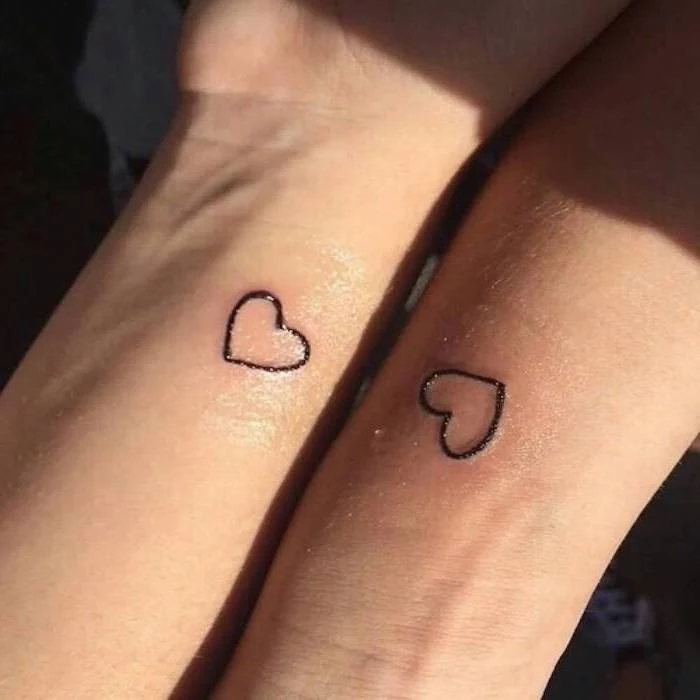
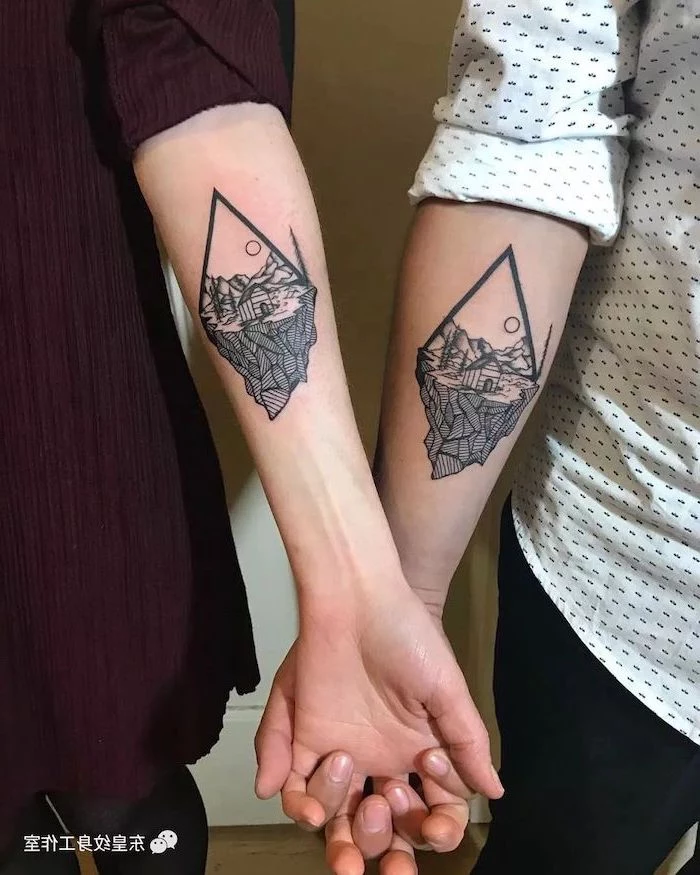
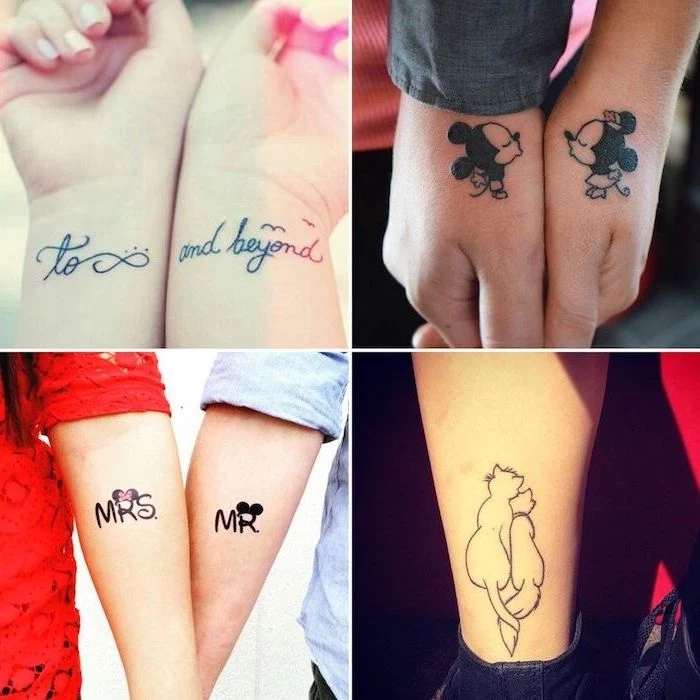
What if the worst happens and we break up?
It’s the elephant in the room, so let’s address it. This is why many artists advise against tattooing names or portraits. Instead, opt for a symbol that represents a beautiful time in your life. If the relationship ends, the tattoo remains a beautiful piece of art from a meaningful chapter, not a painful reminder. Think of it as a symbol of love, not a contract of ownership.
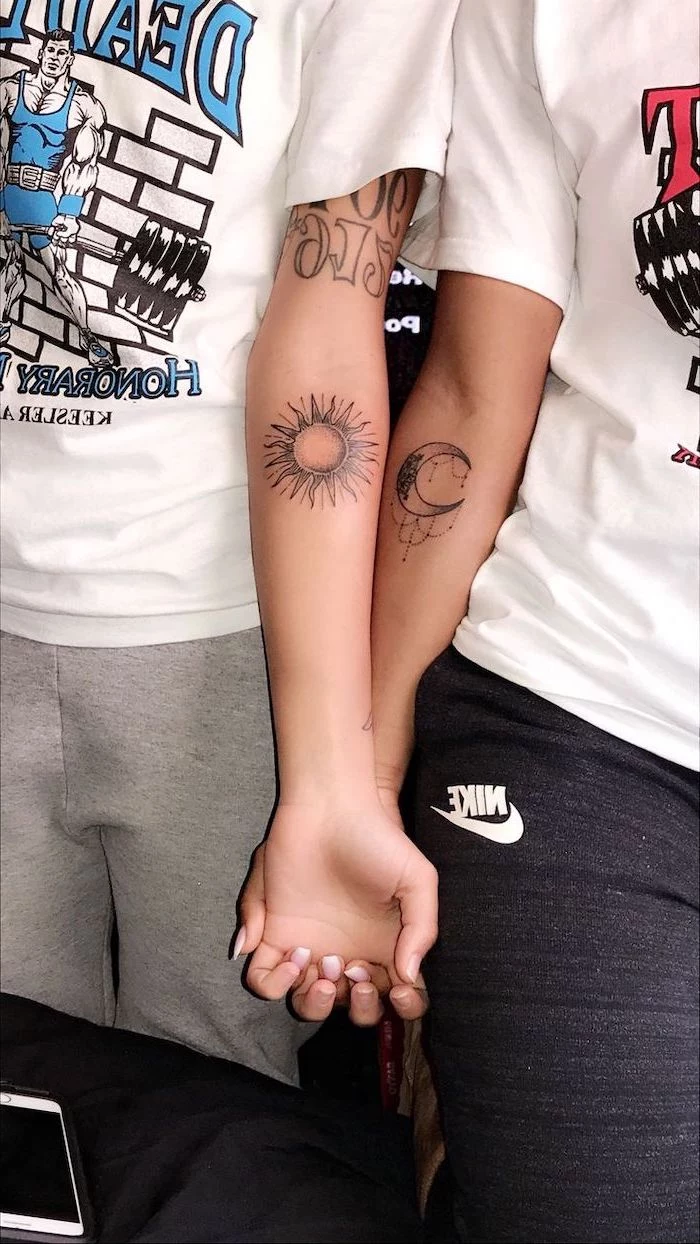
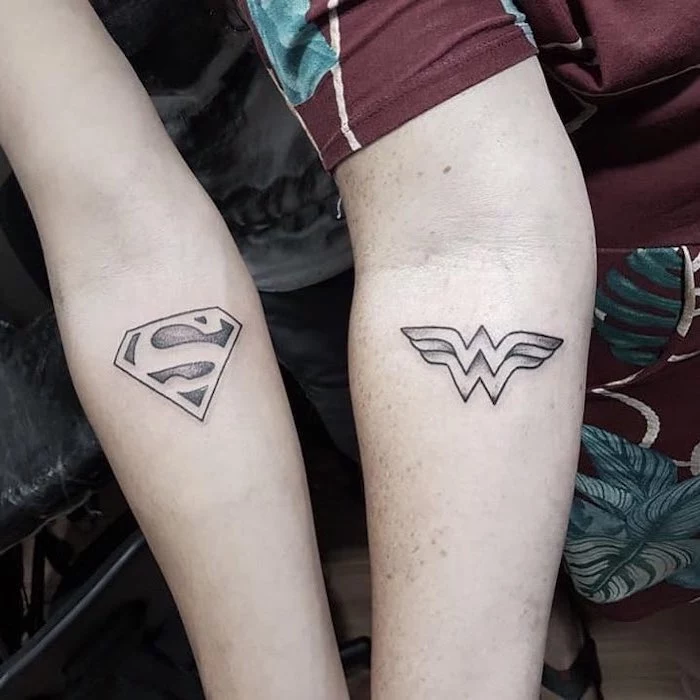
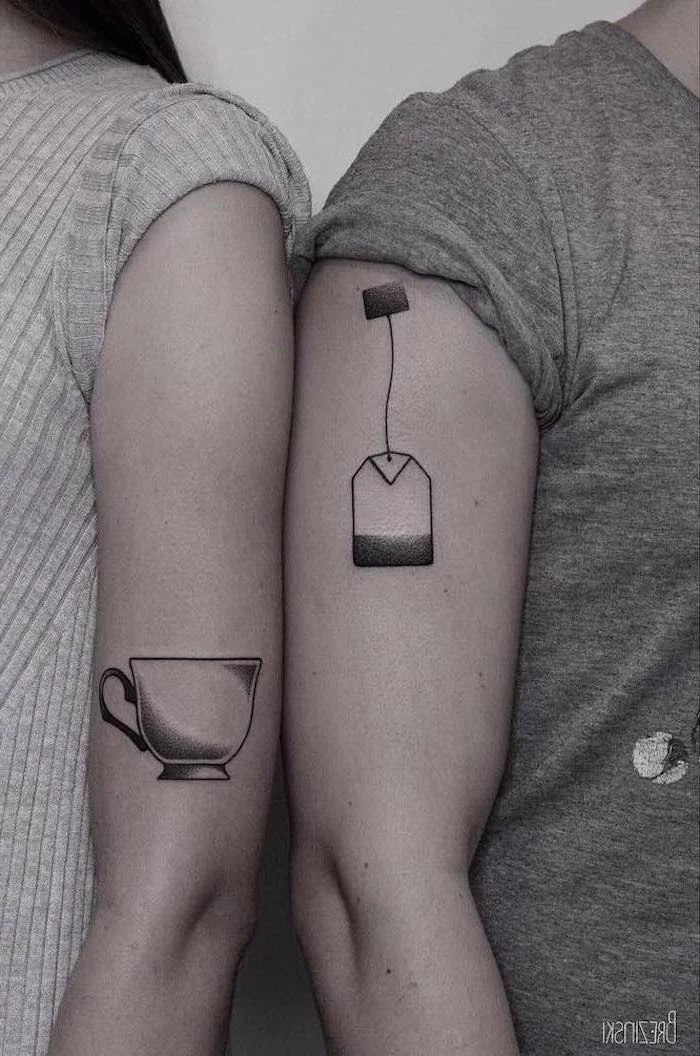
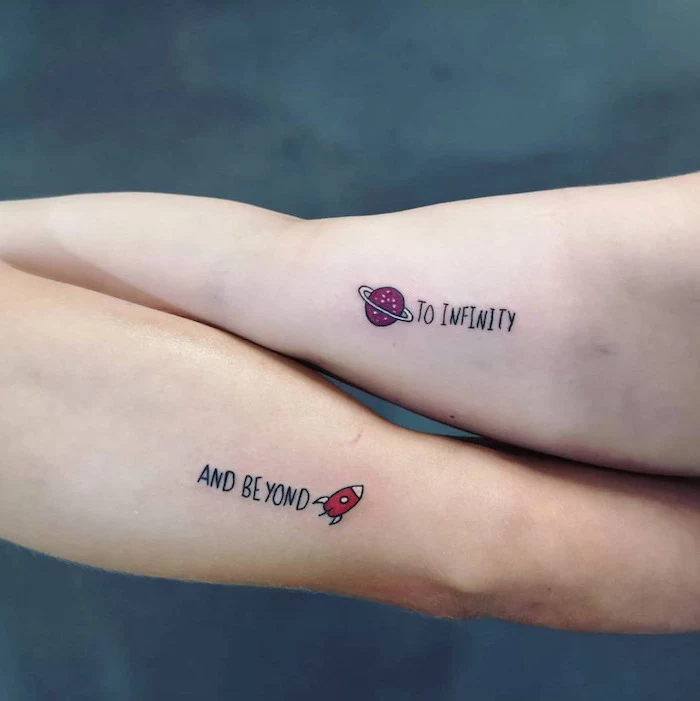
Placement is a conversation. While a matching forearm tattoo is a classic, consider how your individual bodies and lifestyles might differ. A tattoo on a hand might fade faster for someone who works with chemicals, while a foot tattoo might be impractical for someone always in boots. Discussing this together ensures you both choose a spot that will age well and feel comfortable long-term.
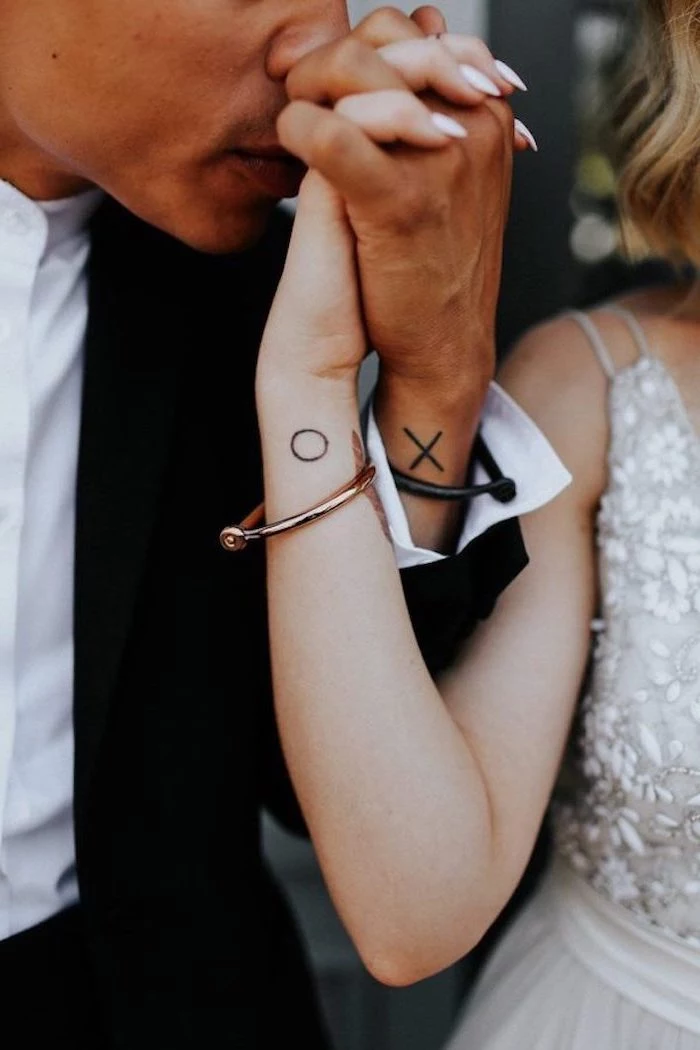
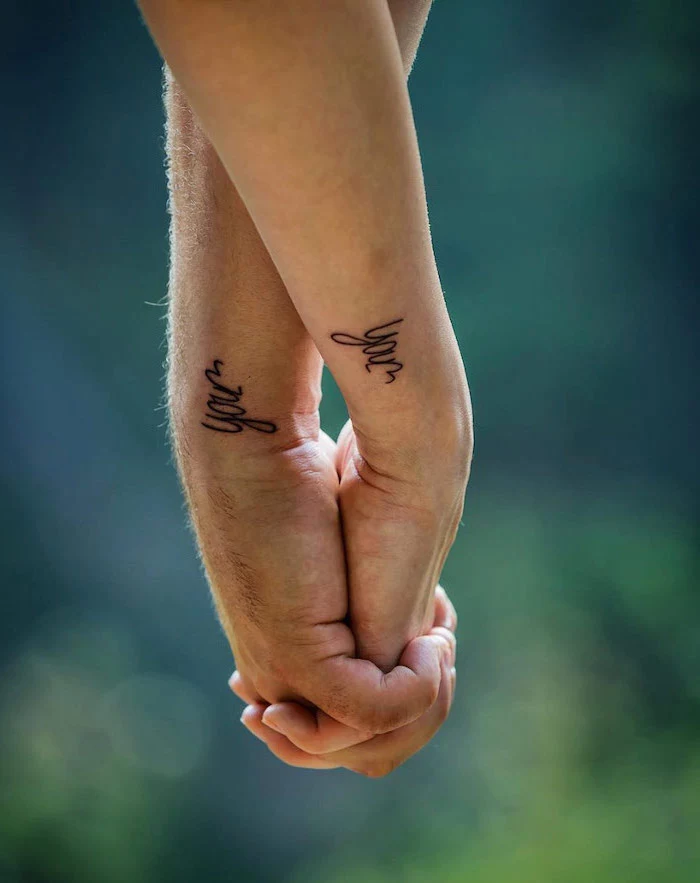
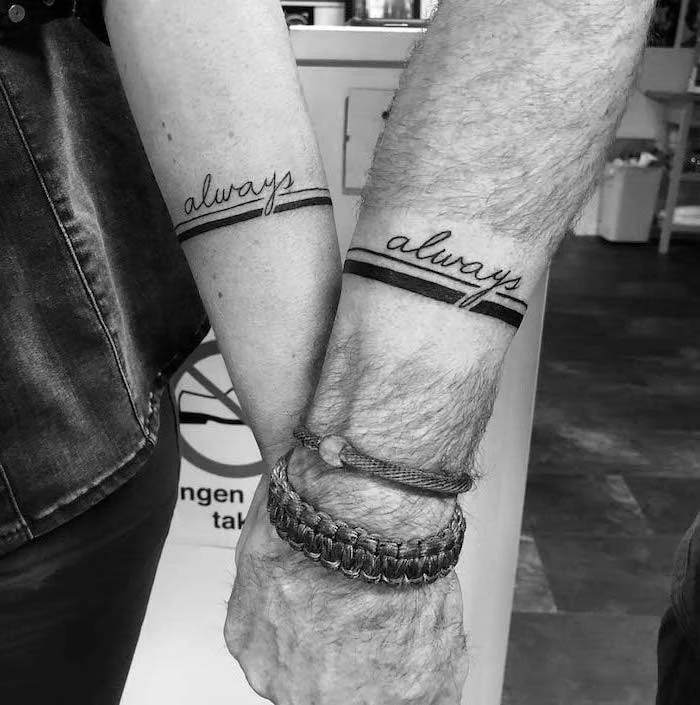
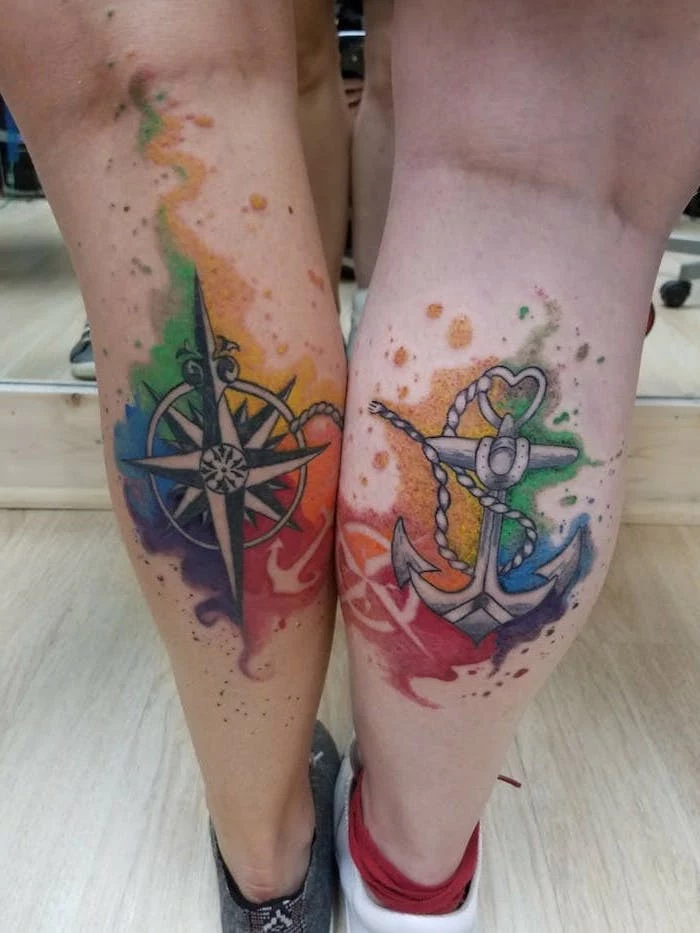
- A shared significant date in Roman numerals.
- The geographic coordinates of where you first met.
- The sound wave of a shared laugh or a whispered ‘I love you’.
- A minimalist outline of your favorite mountain range or coastline.
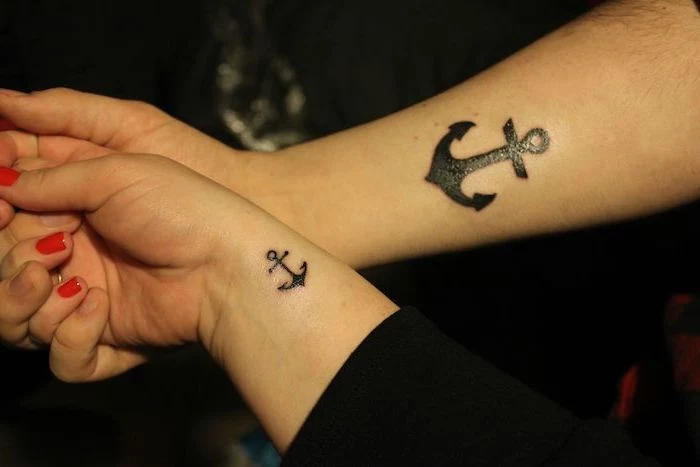
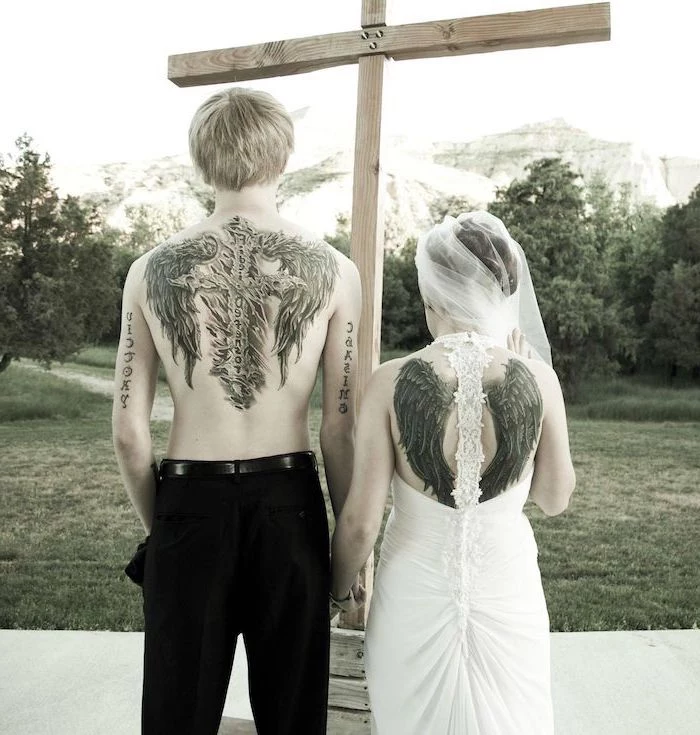
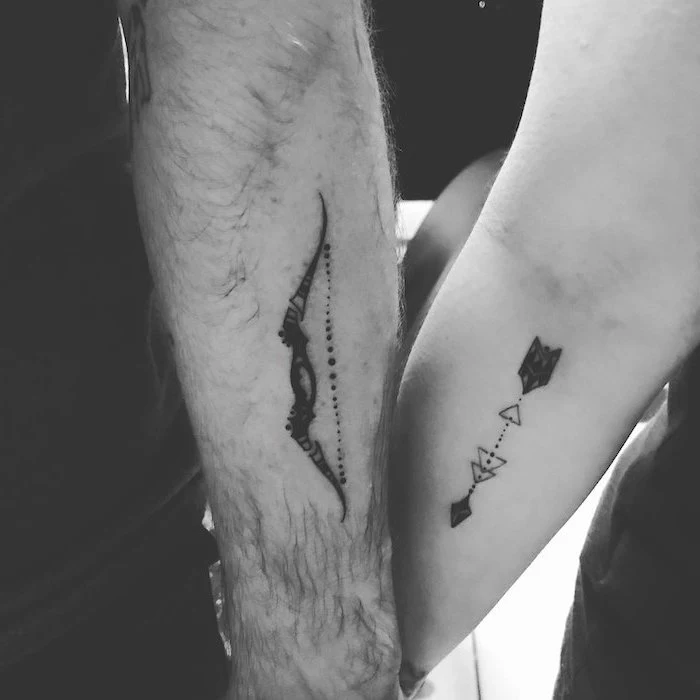
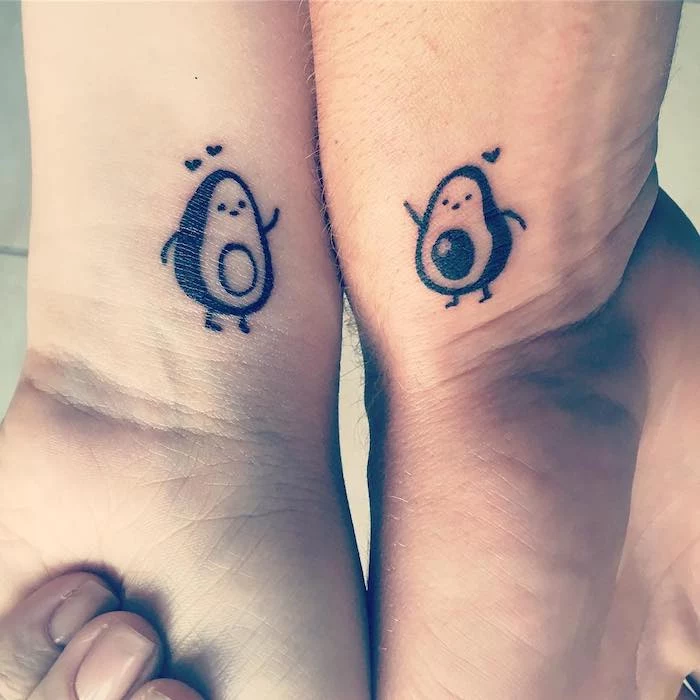
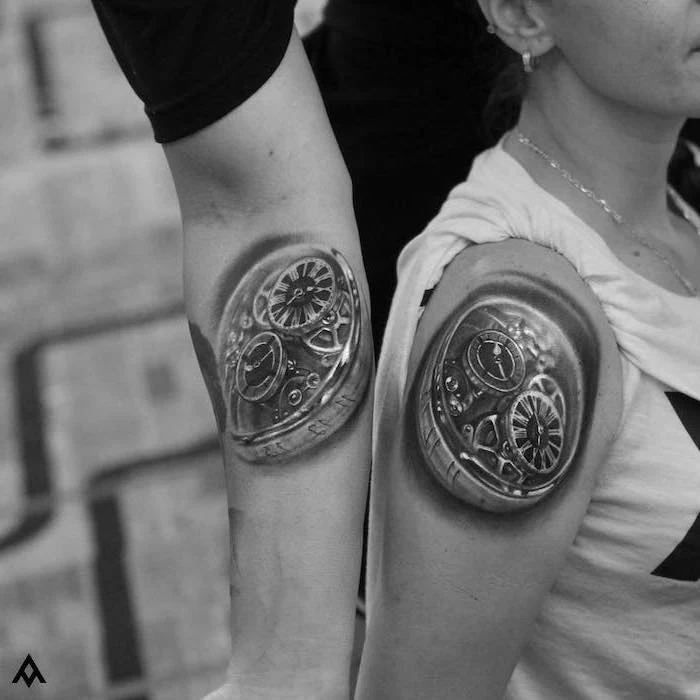
The Healing Ritual. The first few days are critical, and doing it together can make it easier. Agree on a gentle, fragrance-free soap like Dr. Bronner’s Baby Unscented. After washing, one of you can help the other apply a thin layer of aftercare balm—many artists recommend products like Hustle Butter or Aquaphor. It turns a chore into a moment of shared care.
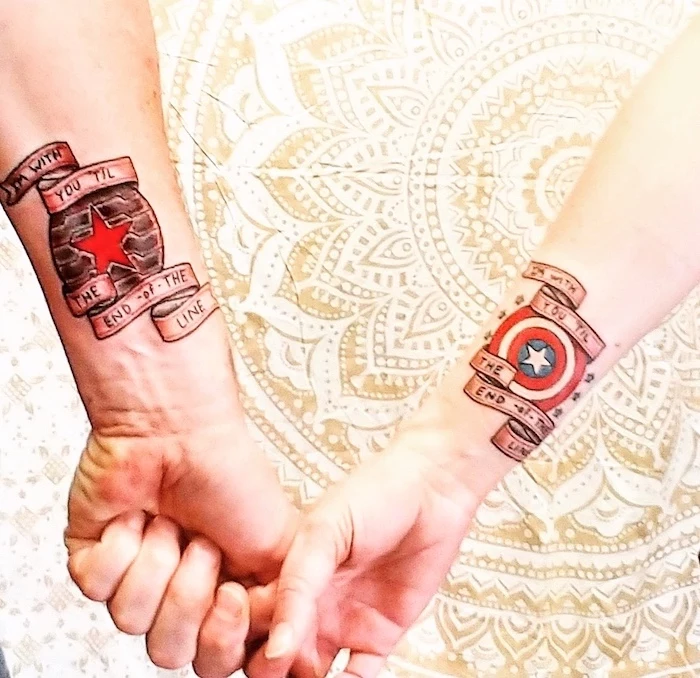
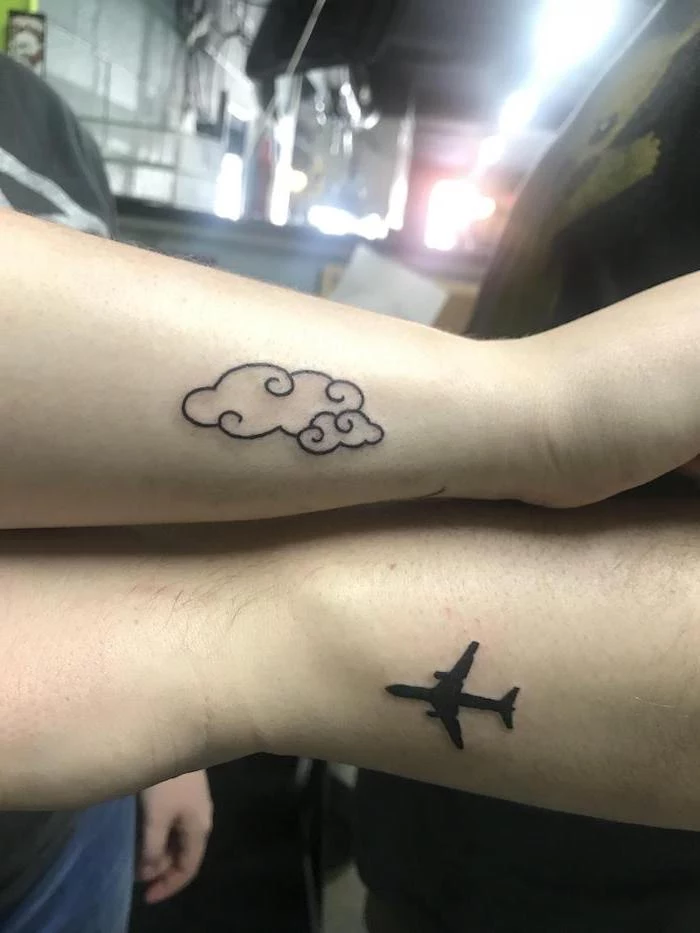
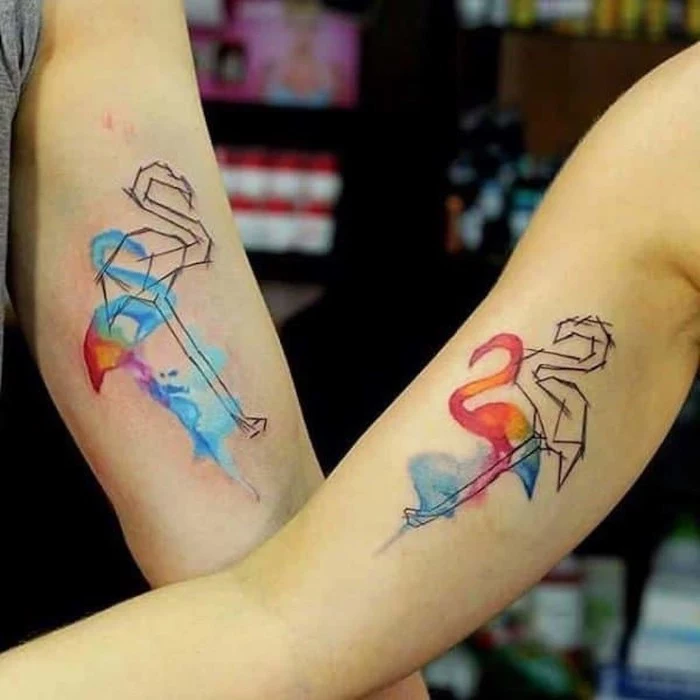

According to a 2019 Dalia Research study, 38% of people with tattoos have one that is a tribute to a loved one.
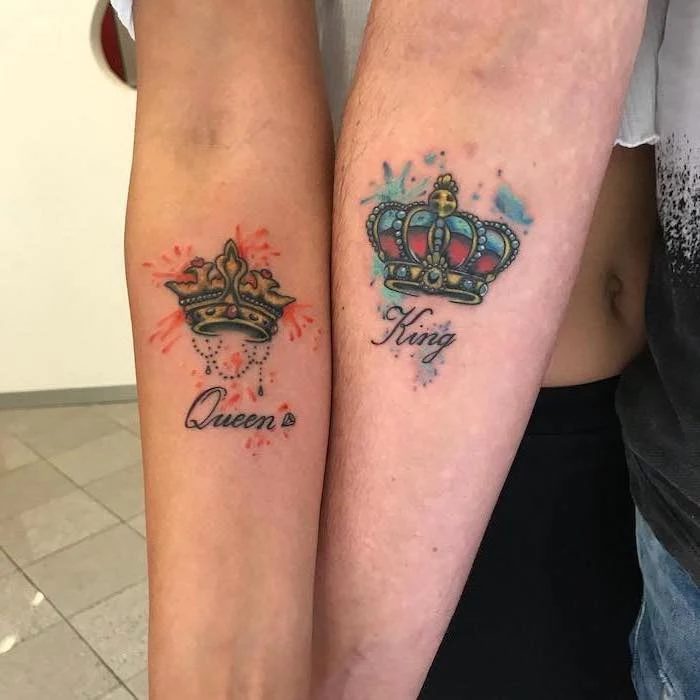
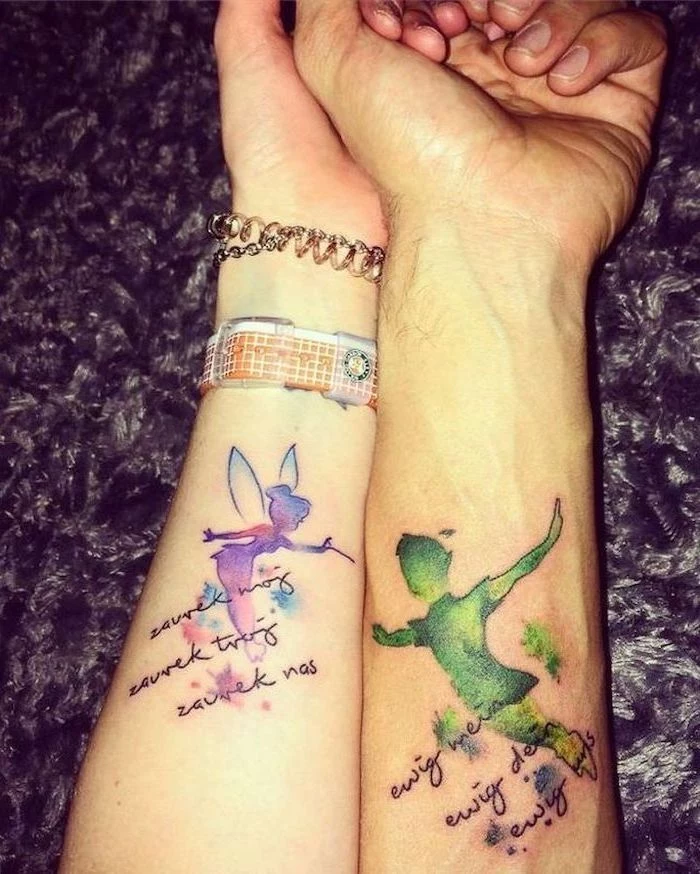
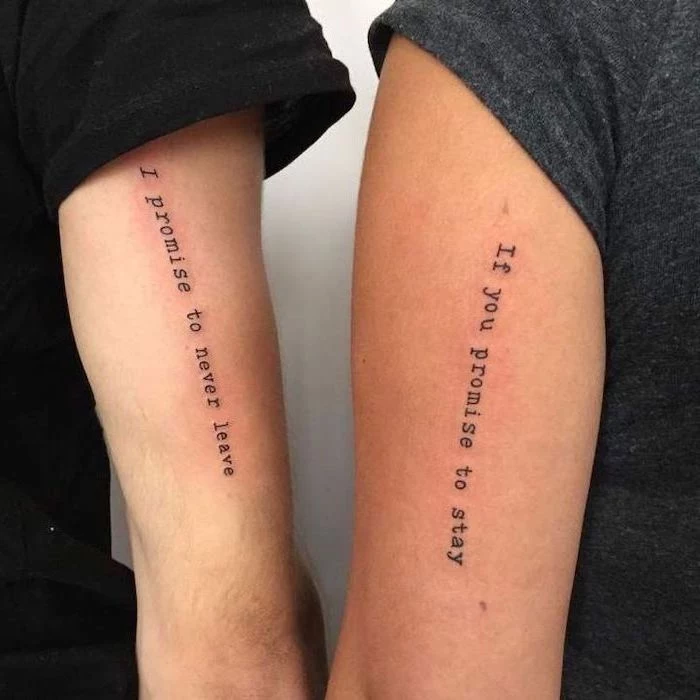
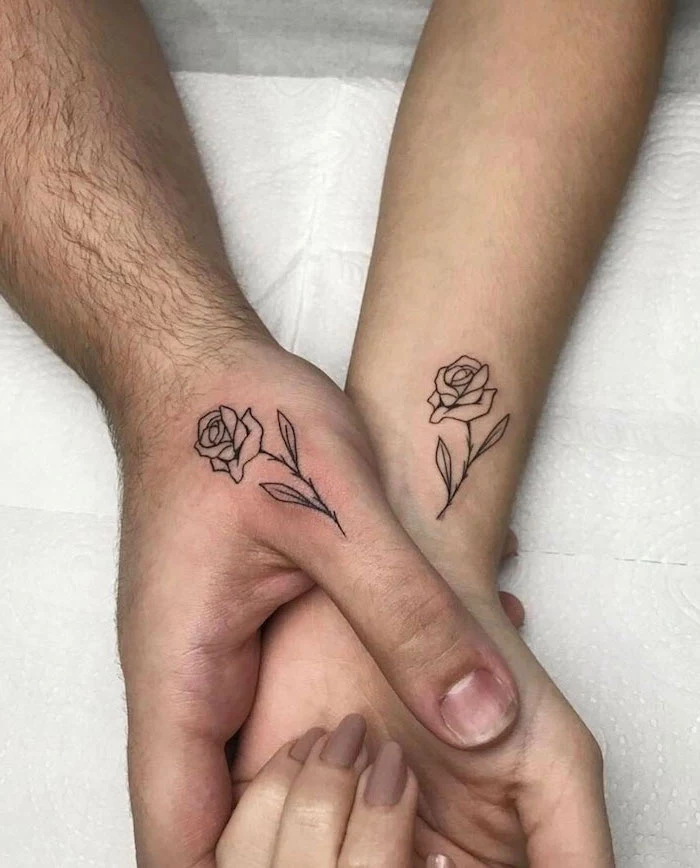
Fine-Line Delicate: Perfect for minimalist, subtle designs. Looks incredibly sharp when new. However, be aware that fine lines are more prone to ‘blowing out’ or fading over time and may require more frequent touch-ups.
Bold Traditional: Uses strong, black outlines and a solid color palette. These designs are built to last; a bold line will hold its integrity for decades, looking clearer from a distance as it ages.
The choice depends on whether you prioritize initial delicacy or long-term legibility.
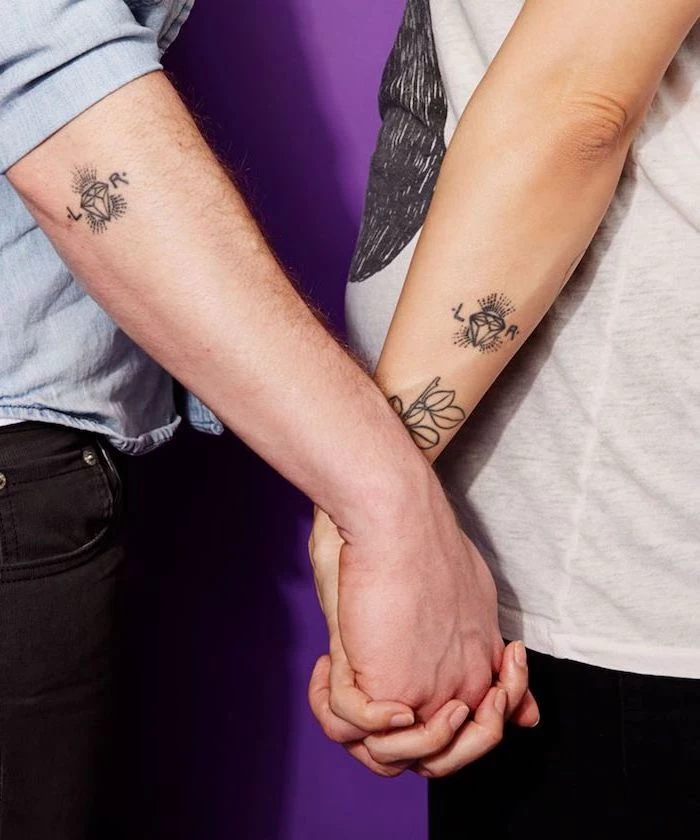

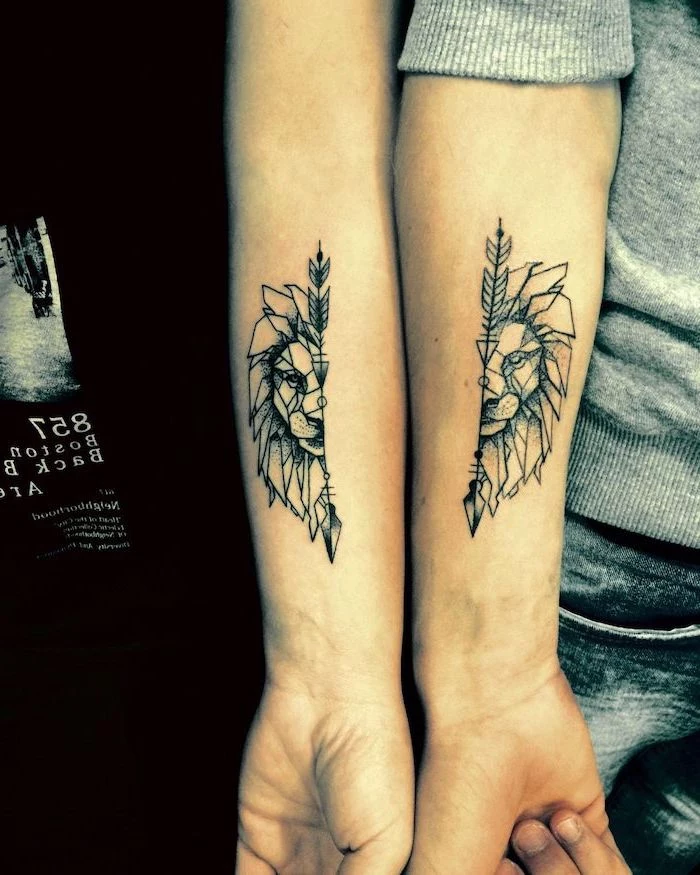
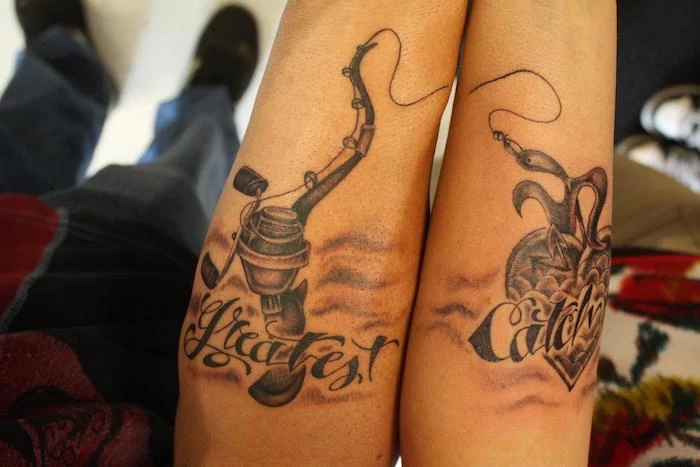
The idea of a ‘one-and-done’ tattoo is a myth. All tattoos age. Plan to revisit your artist for a touch-up session a decade down the line. It’s a fantastic way to celebrate an anniversary, breathe new life into your shared art, and reconnect with the moment you first got it.
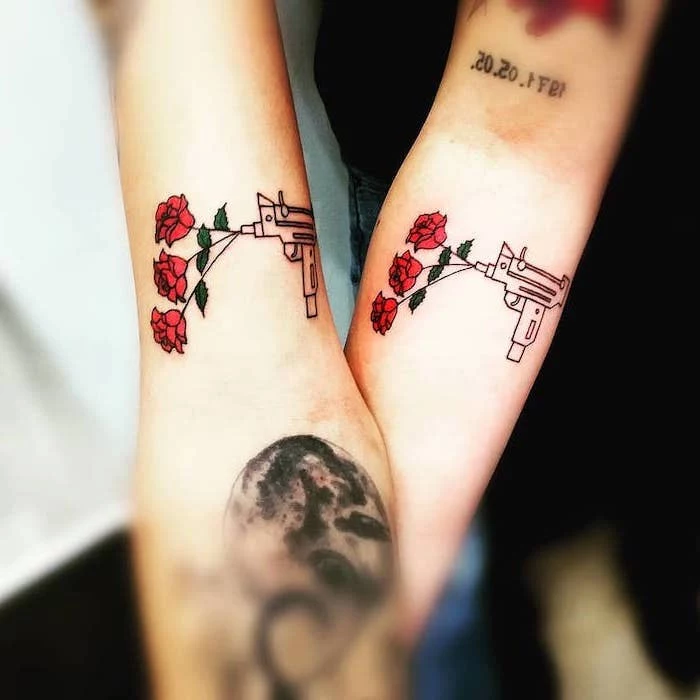
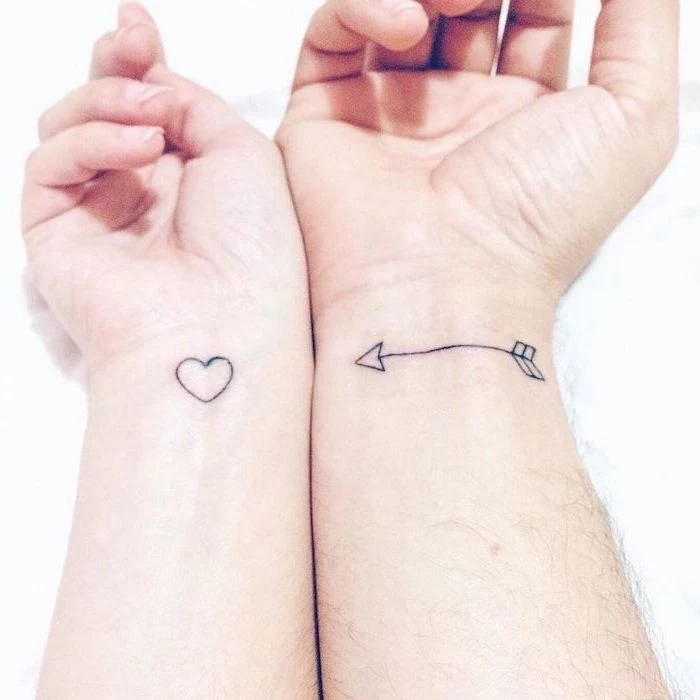
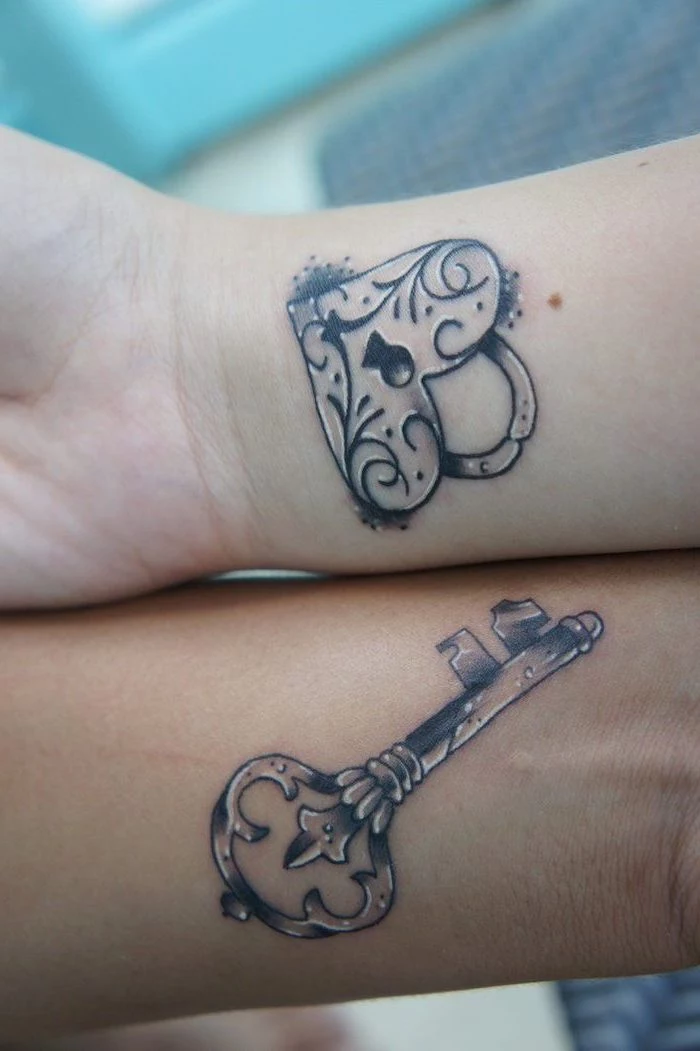
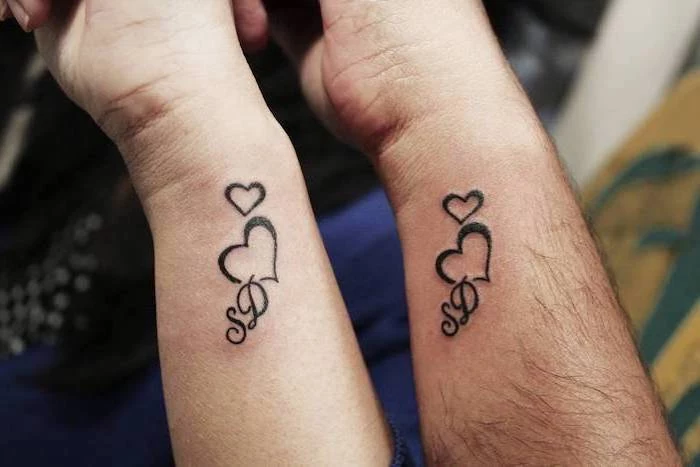
Think beyond the visual. What does your connection *sound* like? Maybe it’s a few notes from ‘your song’. What does it *feel* like? Perhaps abstract shapes that represent calm and excitement. Tattoos can be sensory representations, not just literal images. It makes the design uniquely and secretly yours.
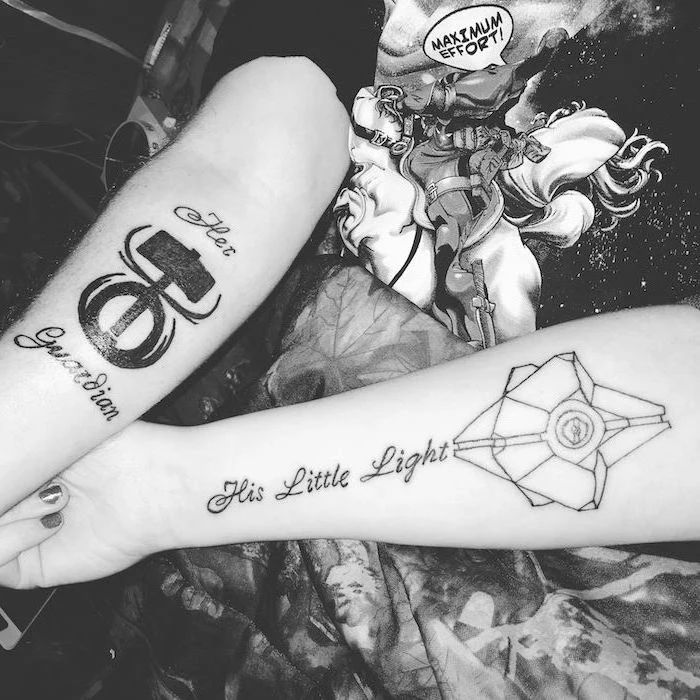
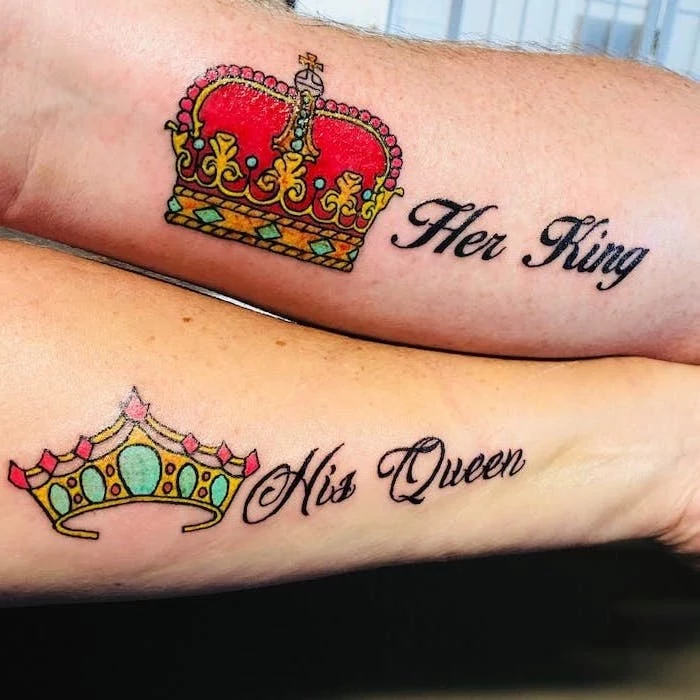
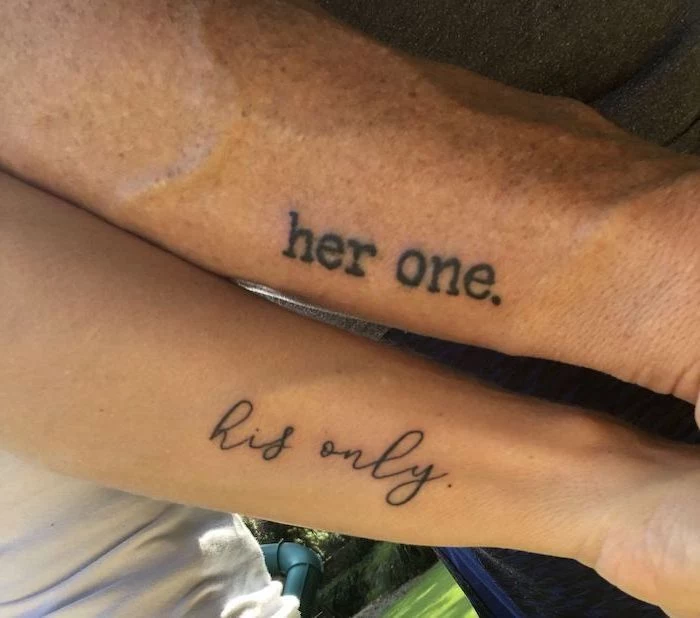
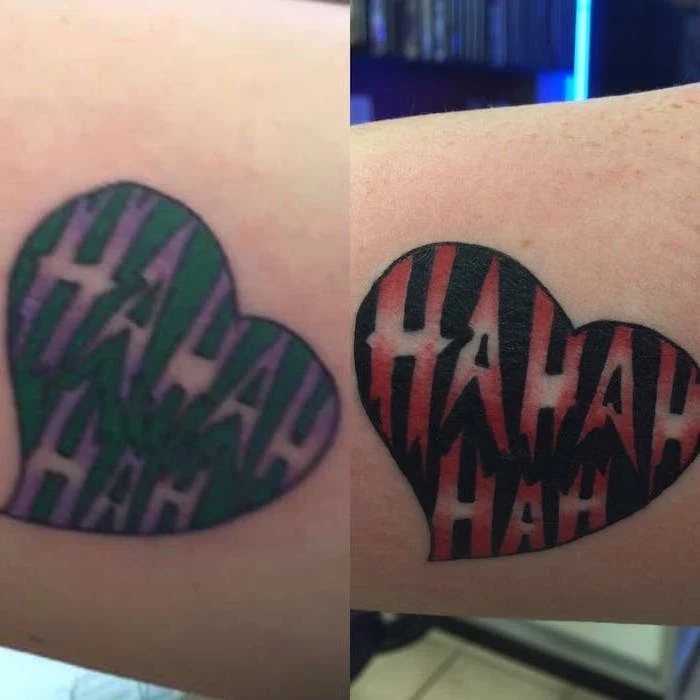
Can we use our own handwriting?
Absolutely! Many artists can create a stencil from a clear image of handwriting. Having your partner’s script tattooed on you is an incredibly personal alternative to a generic font. Just be sure the writing is clear and bold enough to remain legible as it ages. Thin, wispy script can blur over time.
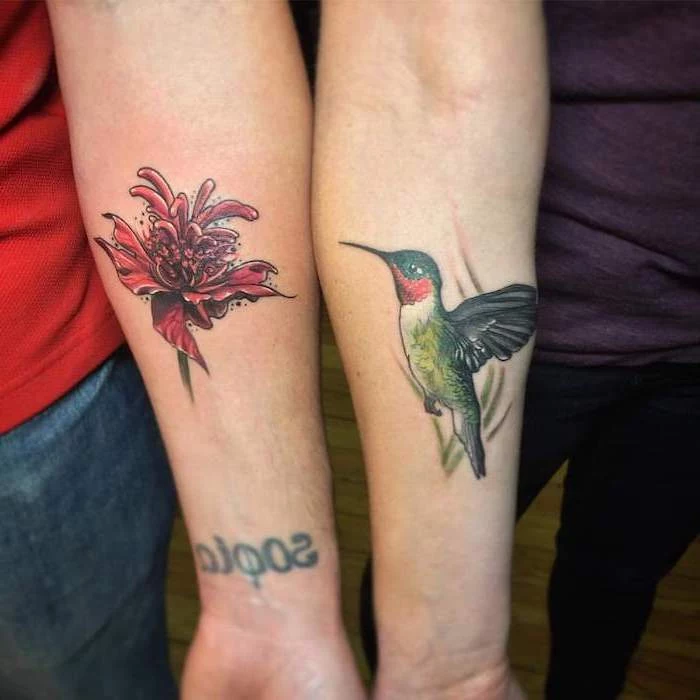
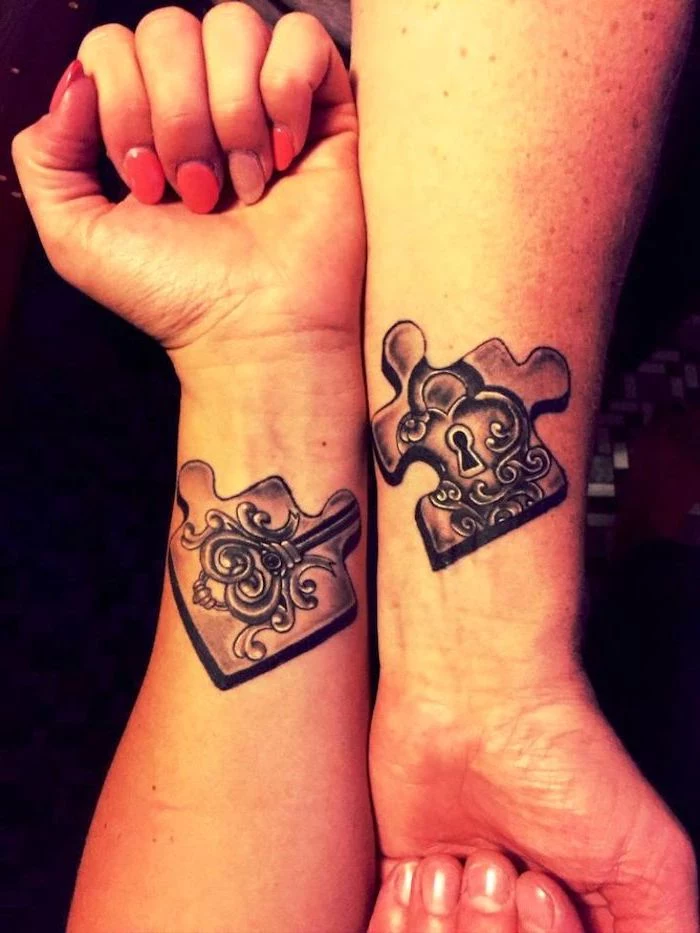
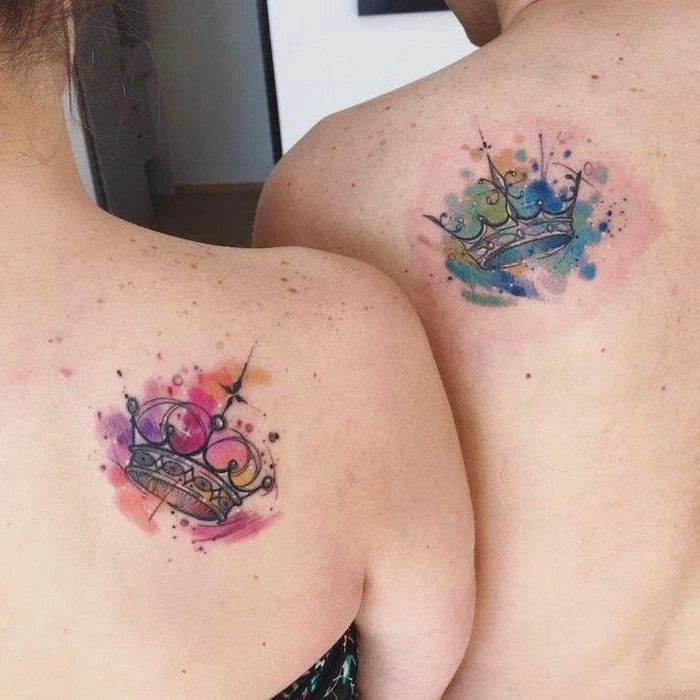


A note on white ink: While it can look stunningly subtle for a couple’s tattoo, be realistic. On its own, white ink is notoriously tricky. It can fade quickly, sometimes turning a yellowish or greyish hue over time, especially with sun exposure. It works best as a highlight within a larger design rather than as the main event.
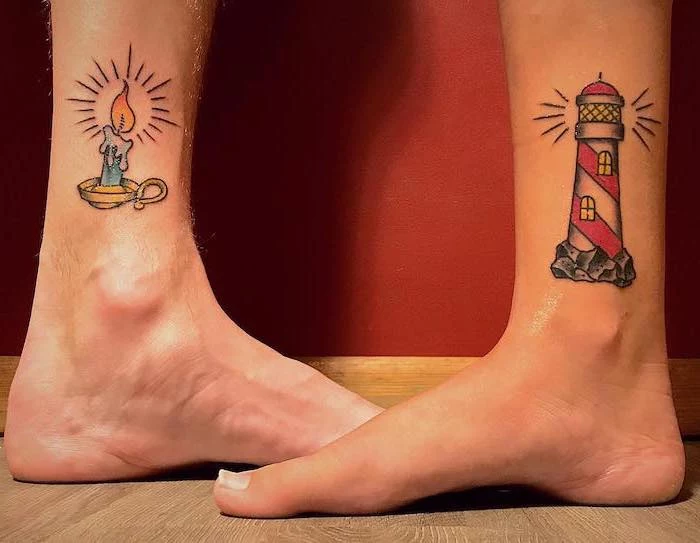
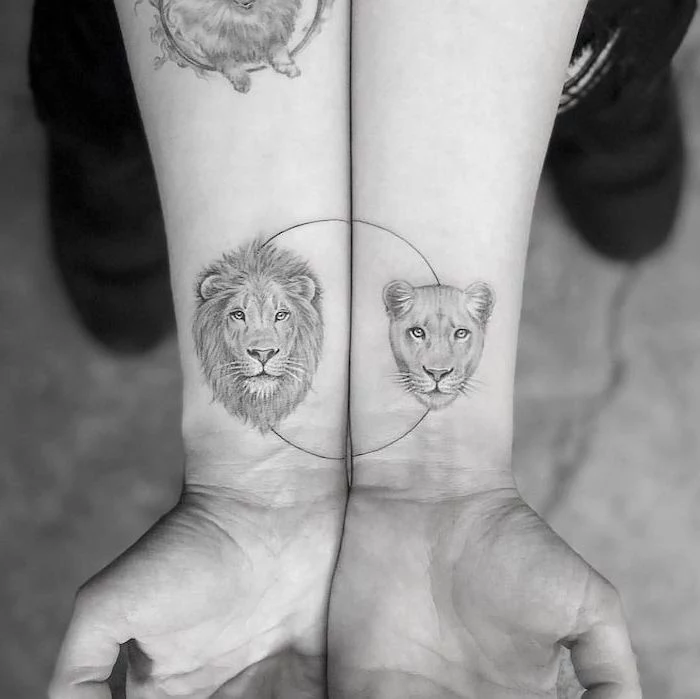
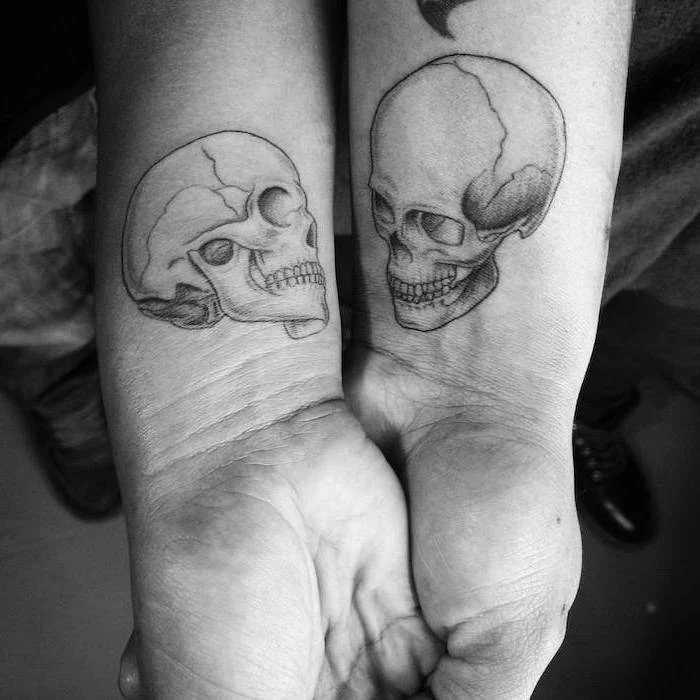
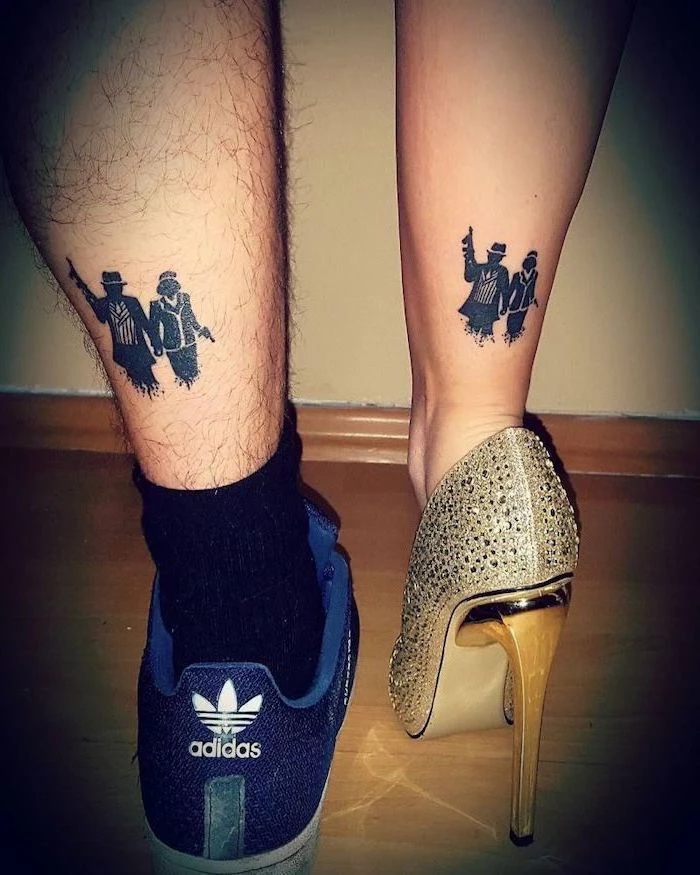
- Protects against fading and blurring.
- Maintains the vibrancy of colors.
- Keeps black lines sharp and crisp.
The secret? Sunscreen. Always. A high-SPF sunscreen (30+) is the single best thing you can do to preserve your tattoos for life. Treat it as a non-negotiable part of your daily routine if your art is exposed.
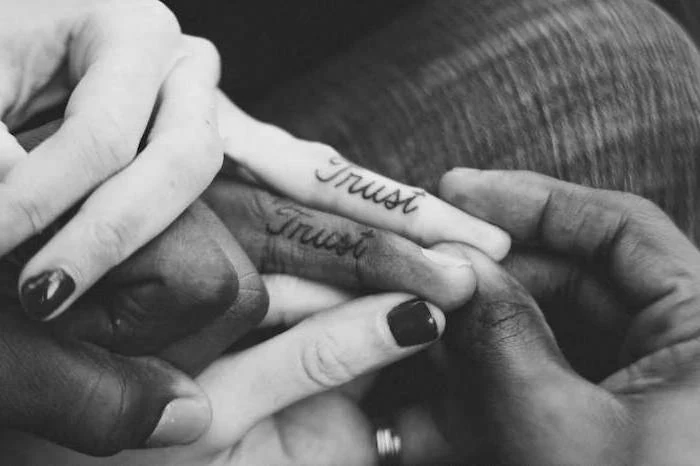
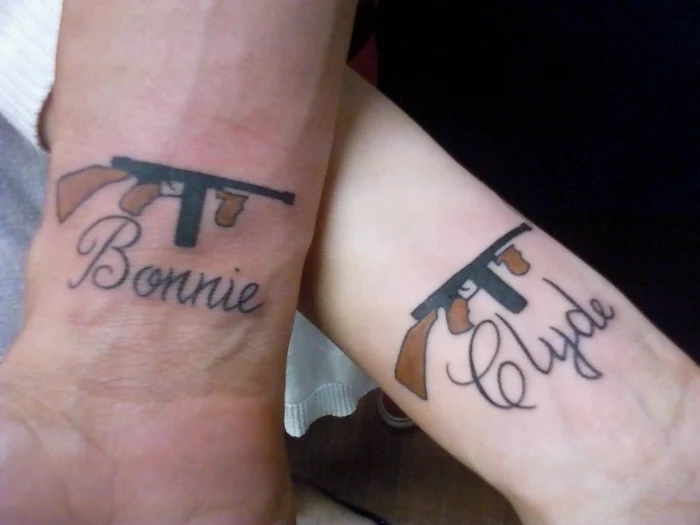
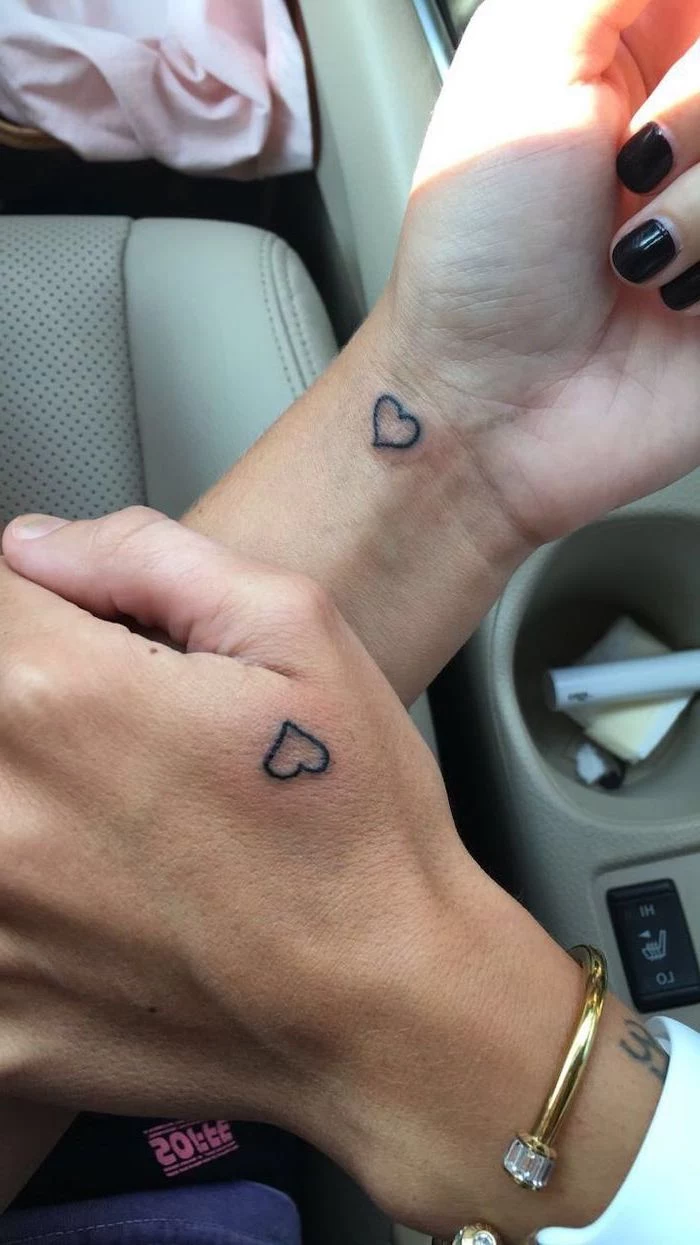
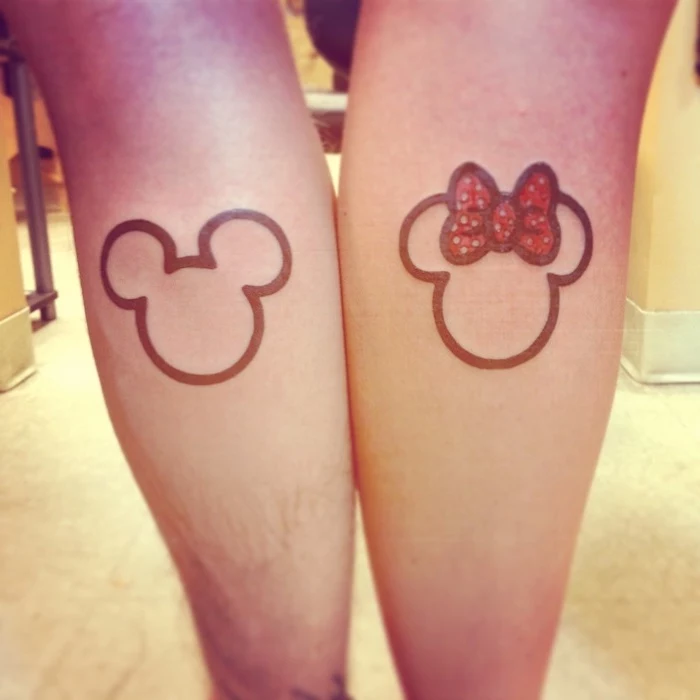
Consider the story your tattoo tells to others. A bold king and queen chess piece on the hand makes a very public statement. A tiny, abstract symbol behind the ear is more of a shared secret. There is no right or wrong, but you should both agree on how public or private you want this symbol of your connection to be.
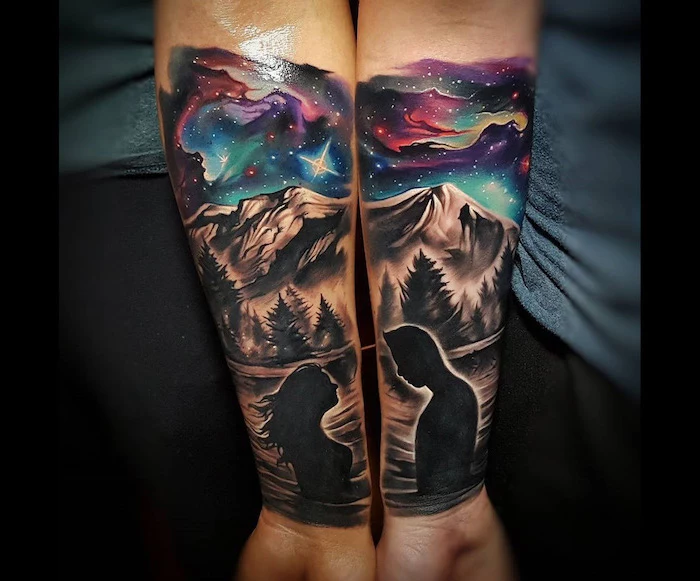
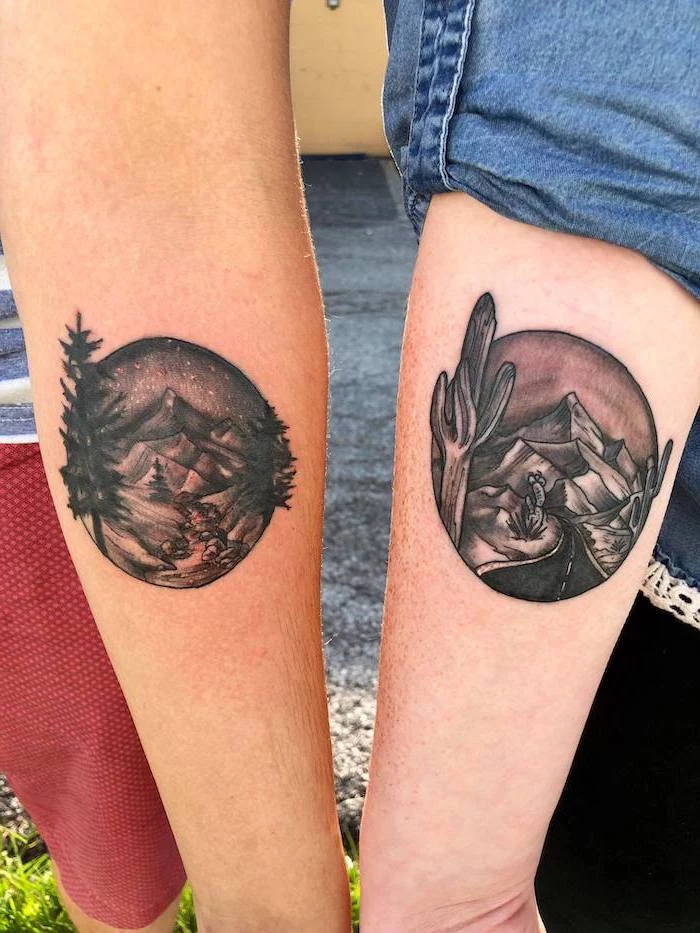
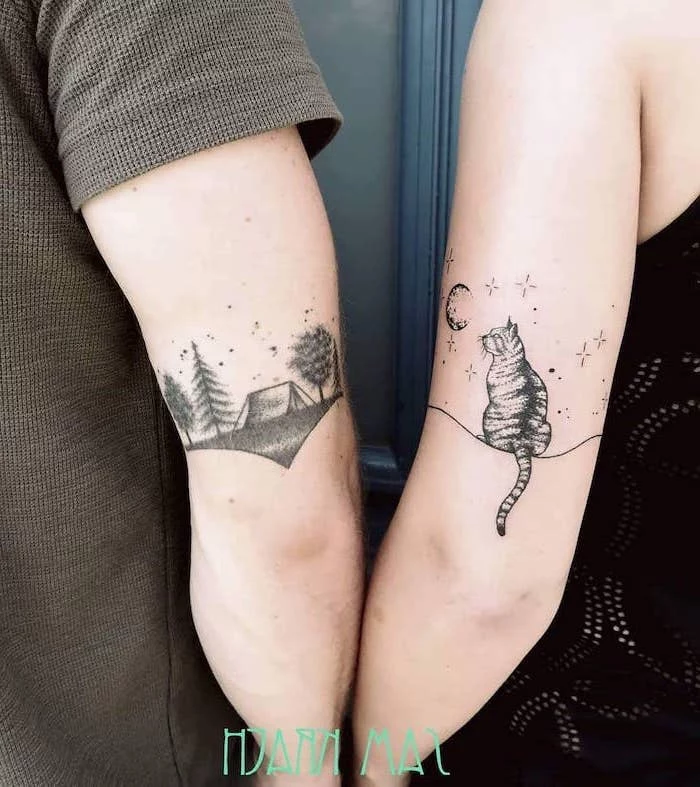
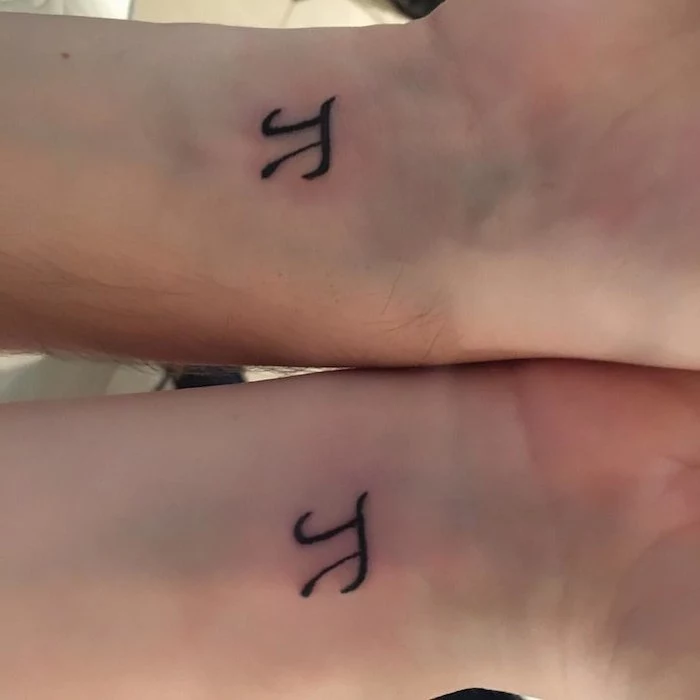
The Finger Tattoo Trap: Yes, they look cool on Pinterest, but the skin on your fingers, palms, and feet regenerates much faster than elsewhere. This means finger tattoos are known for fading dramatically and blurring quickly. For a symbol meant to last a lifetime, this high-maintenance placement is often a poor choice.
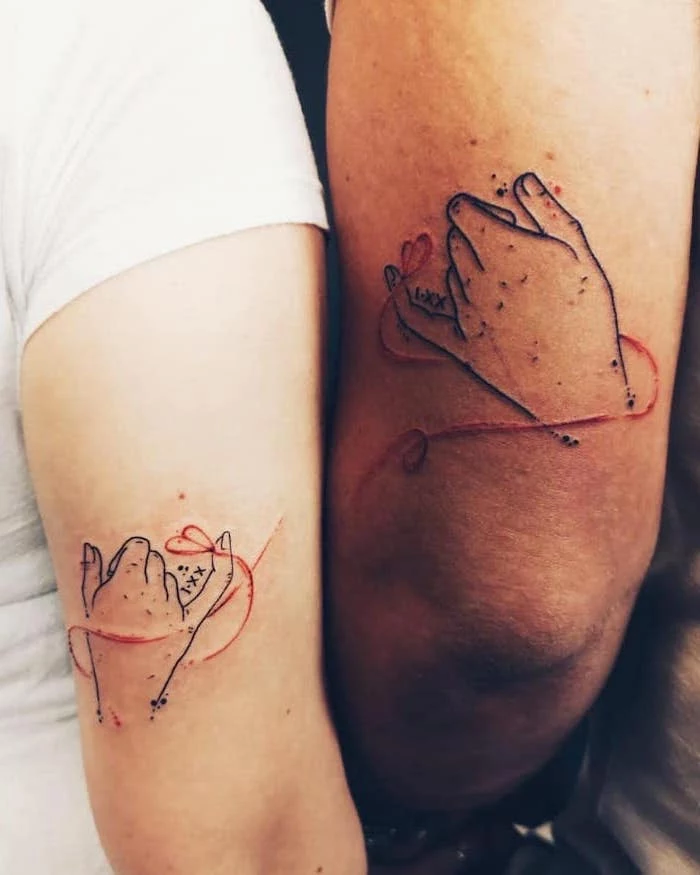
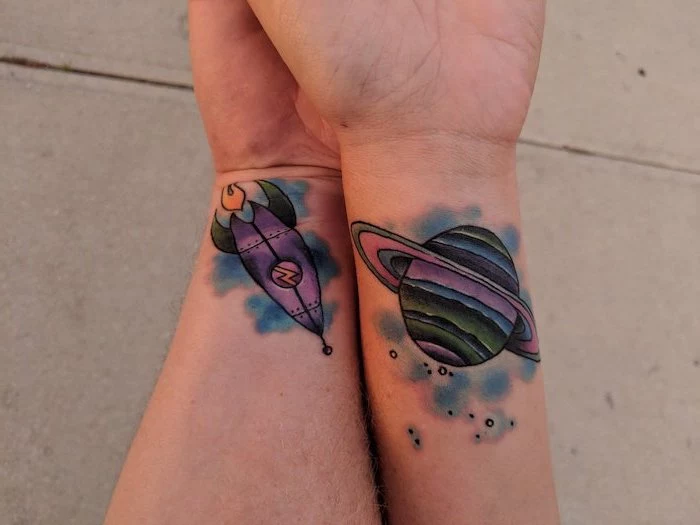
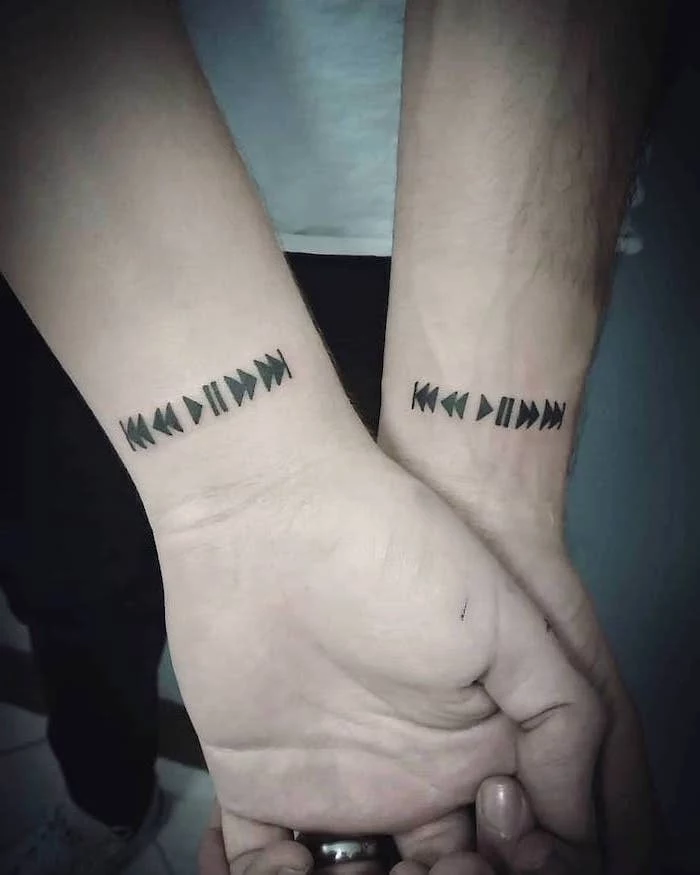
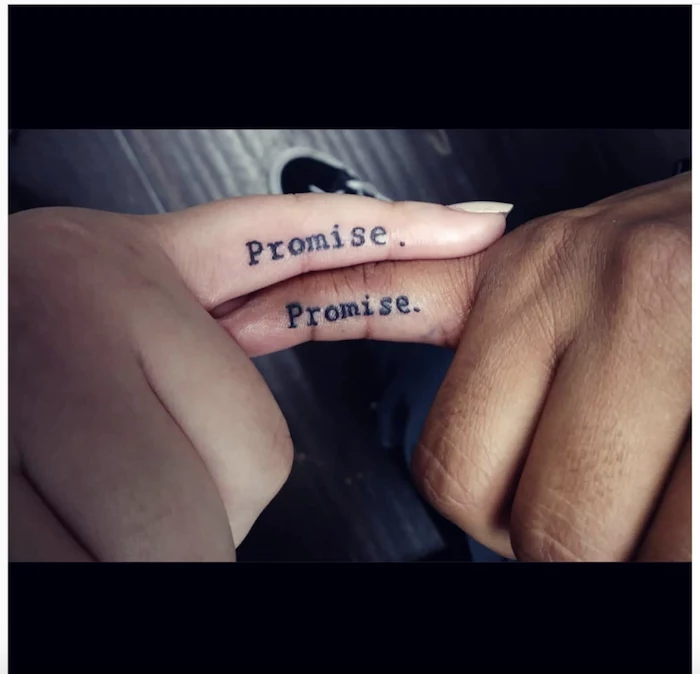
A single shared element can be more powerful than a whole matching design. Imagine you both get completely different tattoos—perhaps a floral piece for one and a geometric animal for the other—but hidden within each design is the same tiny star or the same single red line. It’s a subtle, intimate link only the two of you know is there.
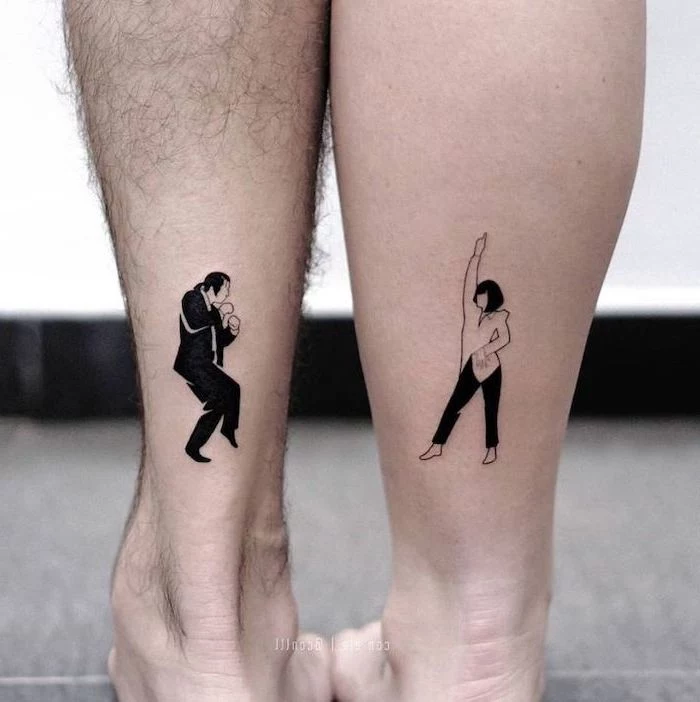
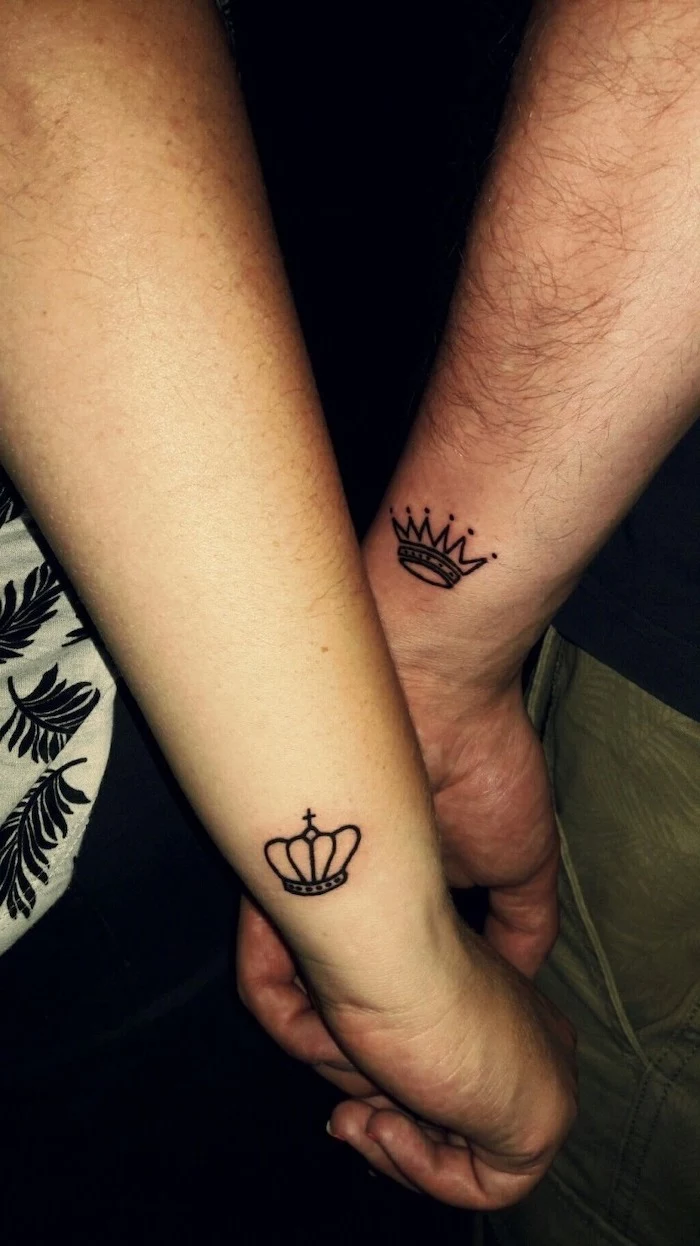
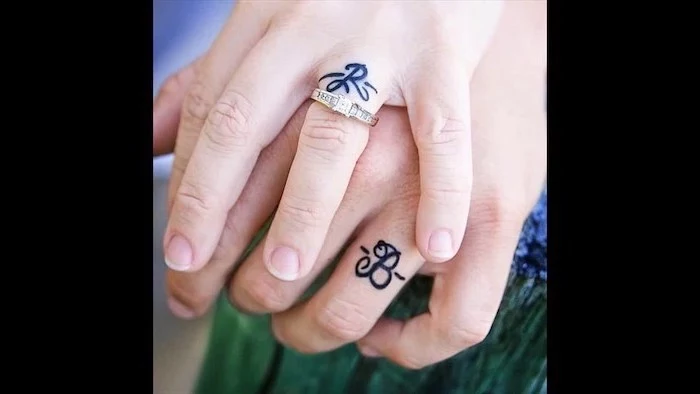
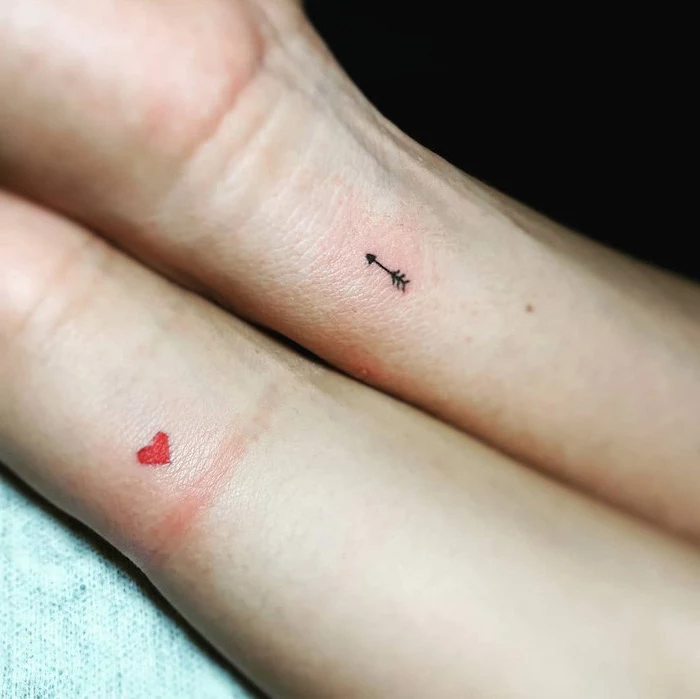
Before committing permanently, why not try a high-quality temporary version? Brands like Inkbox or Tattly offer custom designs that last 1-2 weeks. It’s a brilliant way to test drive your chosen design and placement, see how it feels to wear it, and make any final tweaks before going for the real thing.
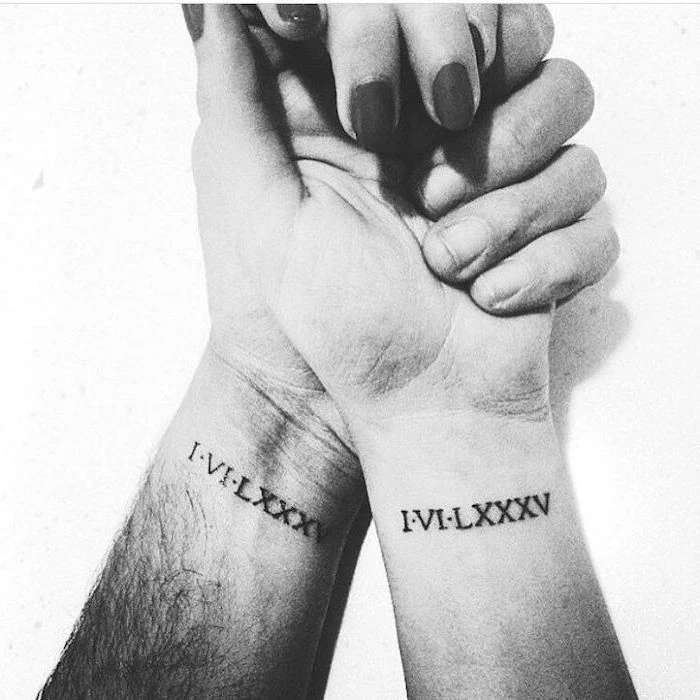
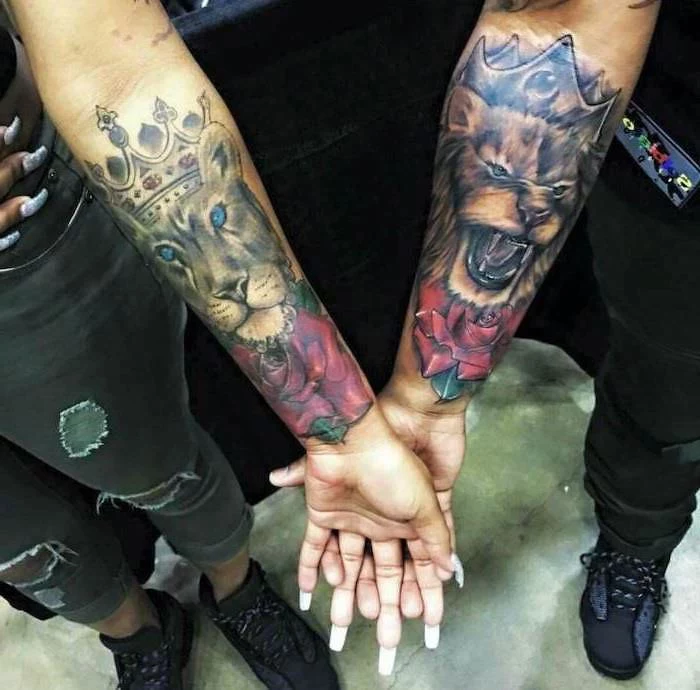
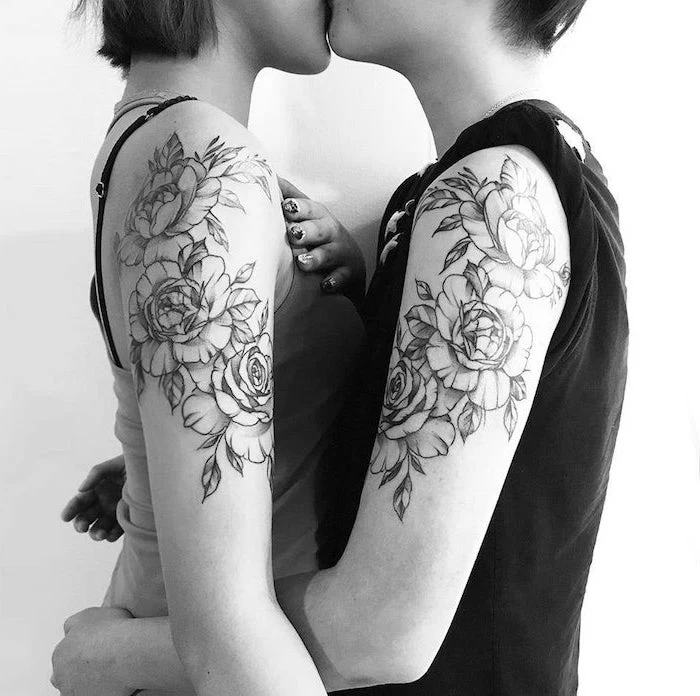
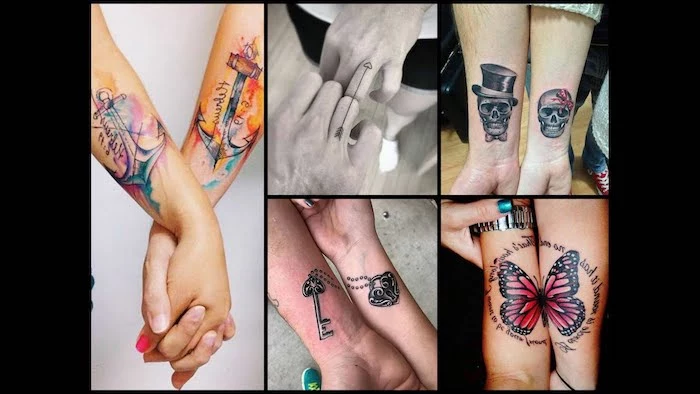
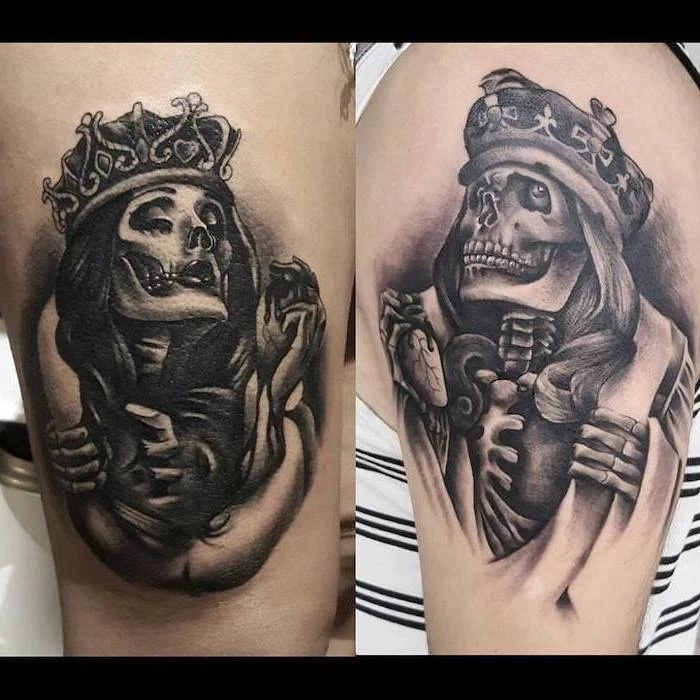
Do we have to get them on the same day?
Not at all! While getting tattooed together is a bonding experience, it can also be a long, tiring day. Some couples prefer to go on consecutive days. One person can support the other, and then they can switch. This ensures you’re both fresh and can give your full attention to your own experience and aftercare.
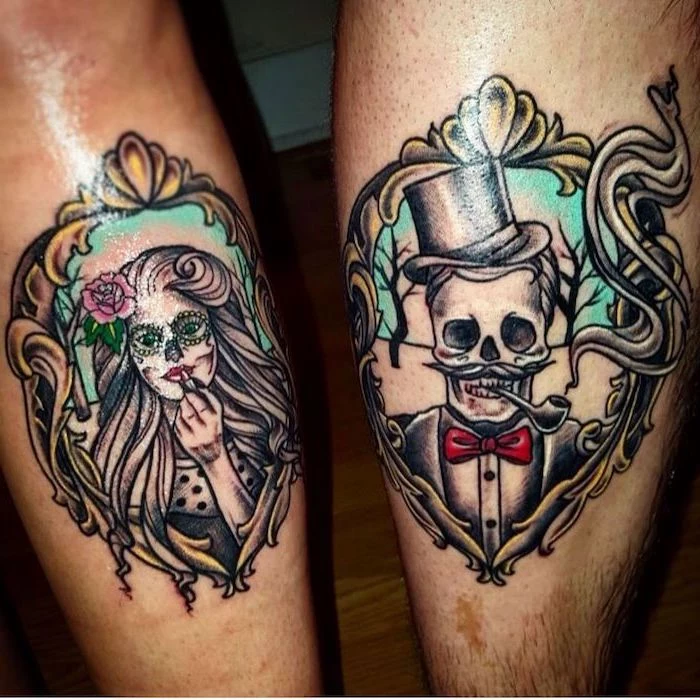
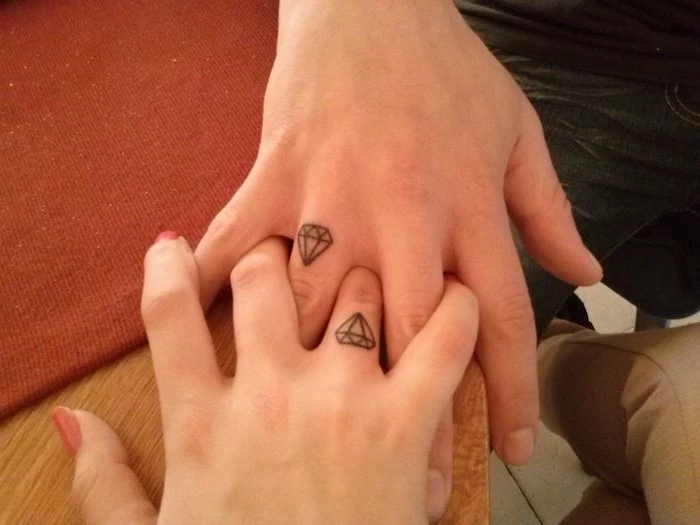
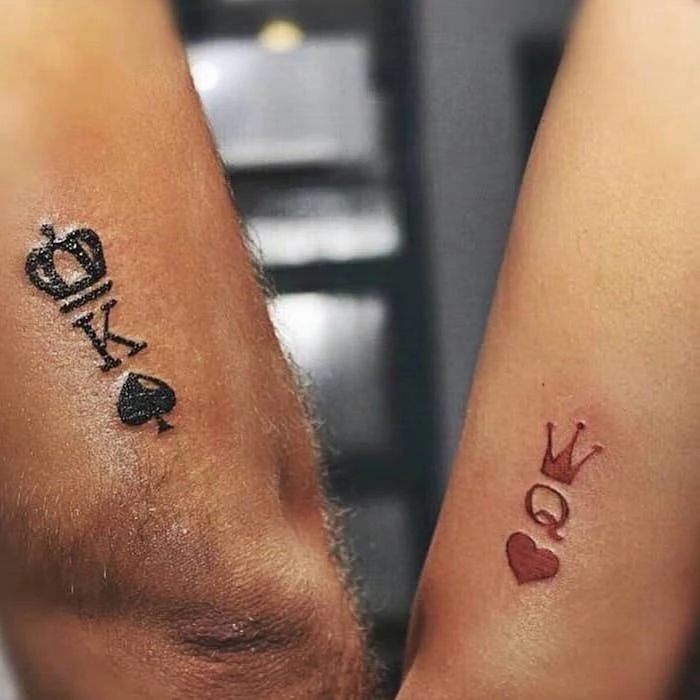
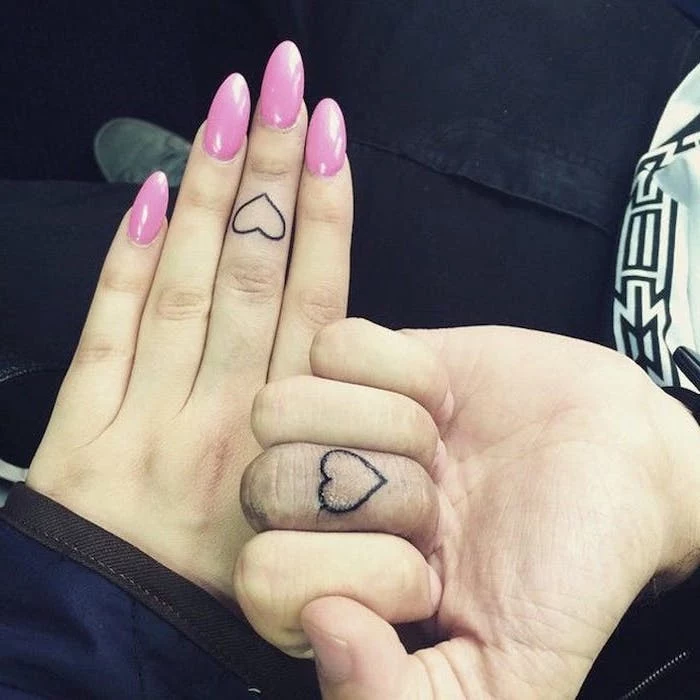
A survey by the American Society for Dermatologic Surgery found that the number of laser tattoo removal procedures increased by 13% from 2016 to 2017.
This isn’t to scare you, but to empower you. Taking the time to find a design that is timeless and symbolic, rather than just trendy or literal (like a name), is the best way to ensure you stay in love with your art for life.
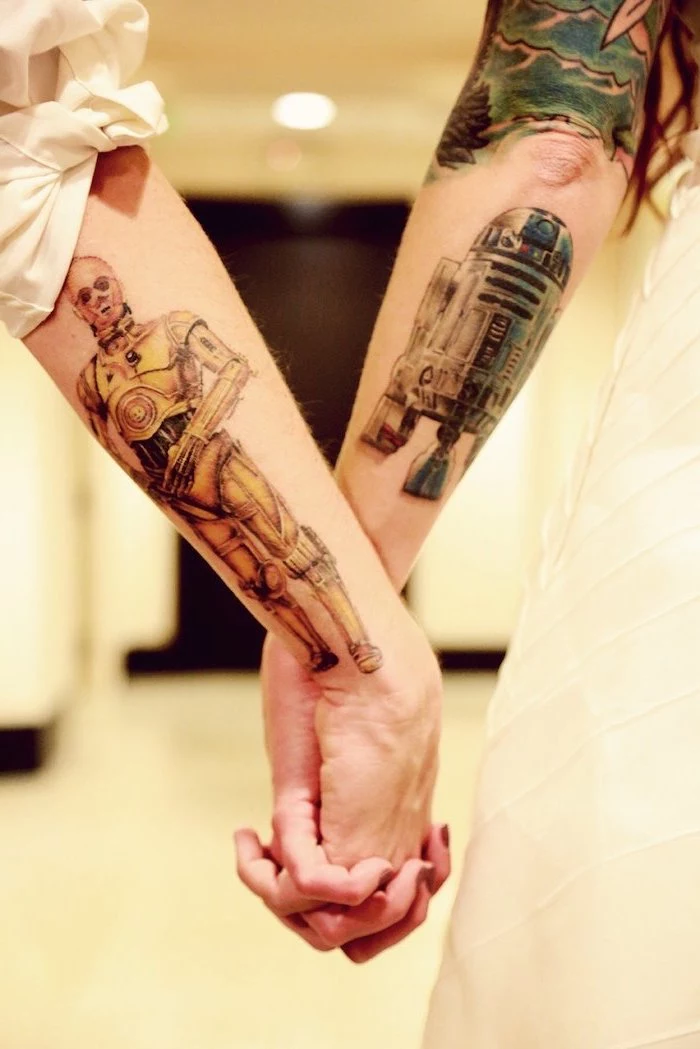
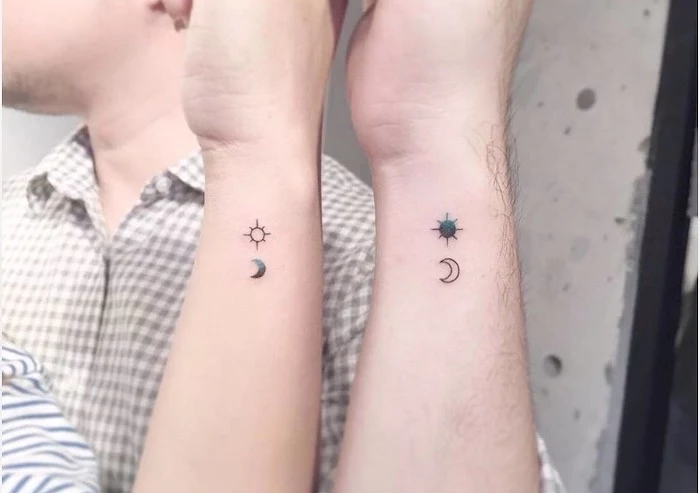
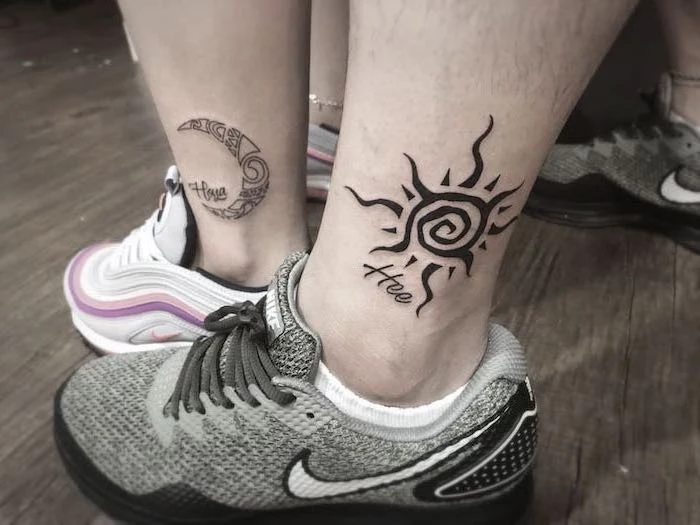
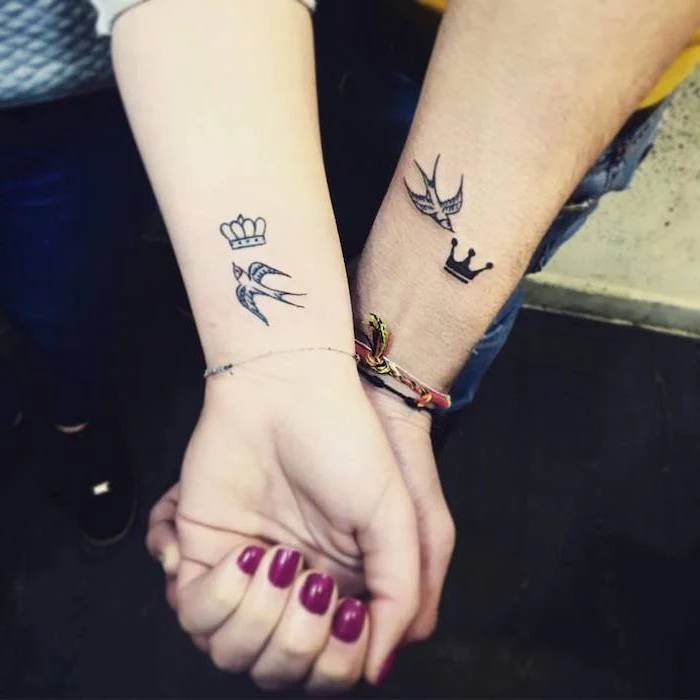
Initials vs. Dates: An initial is tied directly to a person, which can feel risky for some. A date, however, marks a moment in time—the day you met, your wedding day, a pivotal adventure. Many find a date to be a ‘safer’ bet, as it commemorates a happy memory that remains valid and meaningful, regardless of what the future holds.
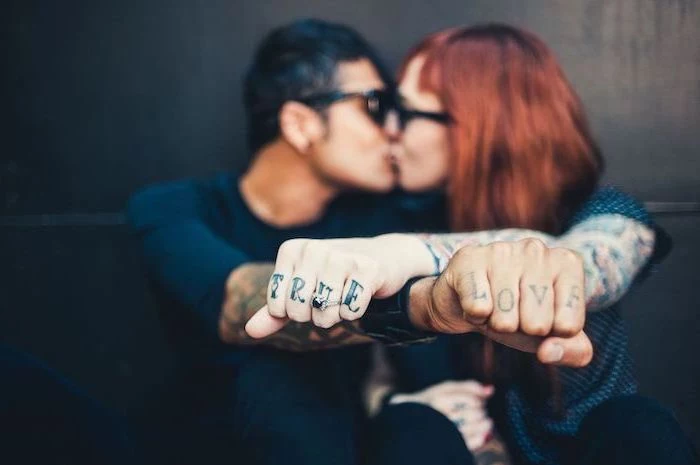
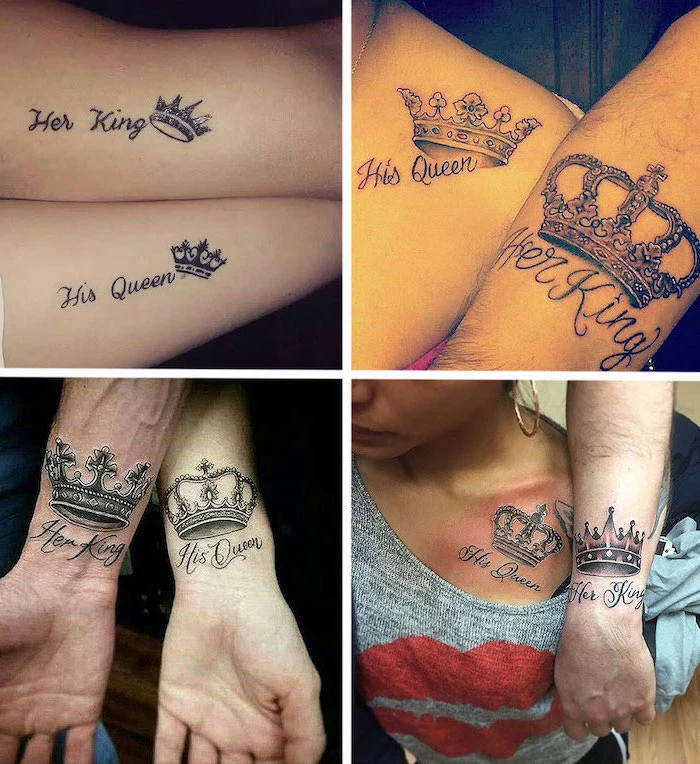
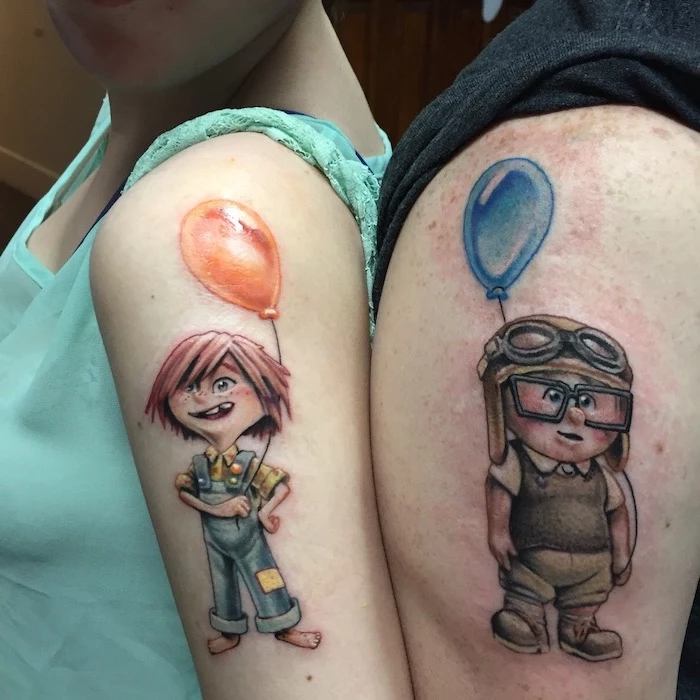
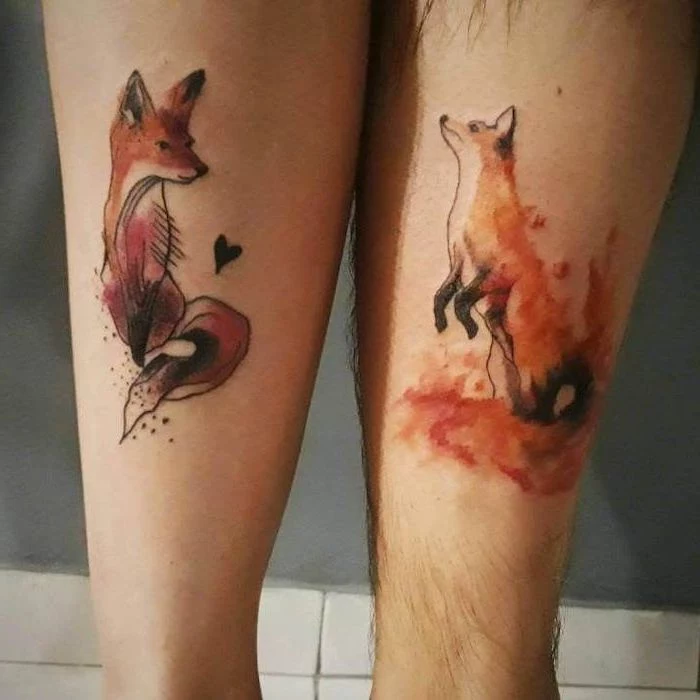
If one of you has a much darker skin tone than the other, your final tattoos may look slightly different even with the same ink. This isn’t a bad thing! A skilled artist can adapt the design, perhaps using bolder lines or different shading techniques for the darker skin to ensure maximum visibility and impact. Discuss this during your consultation.
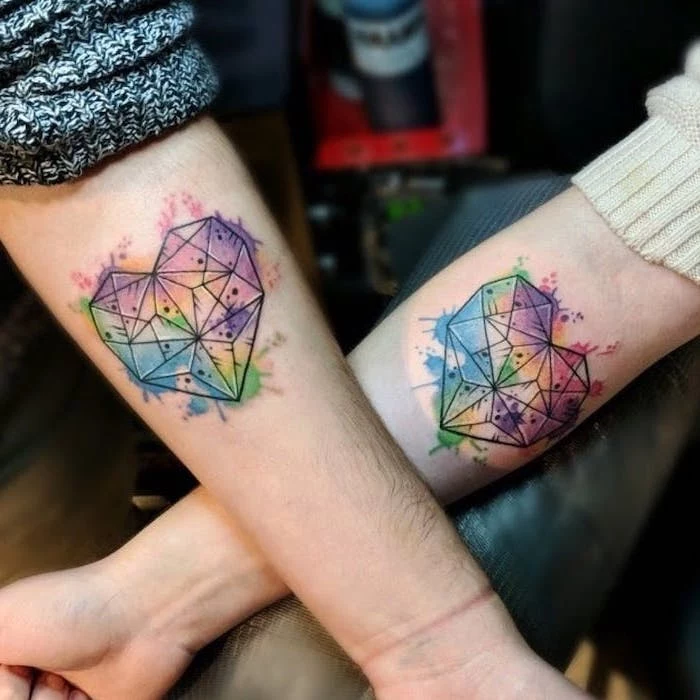
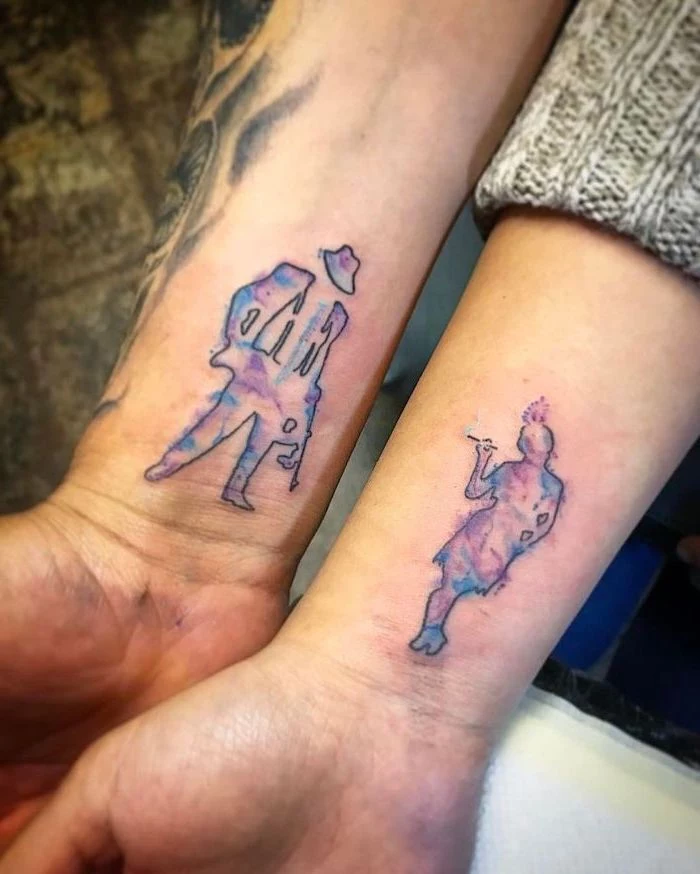
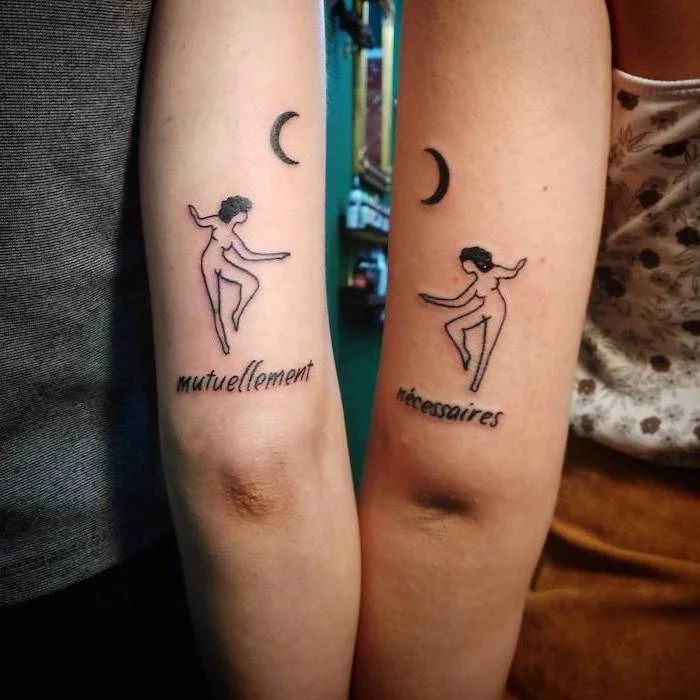
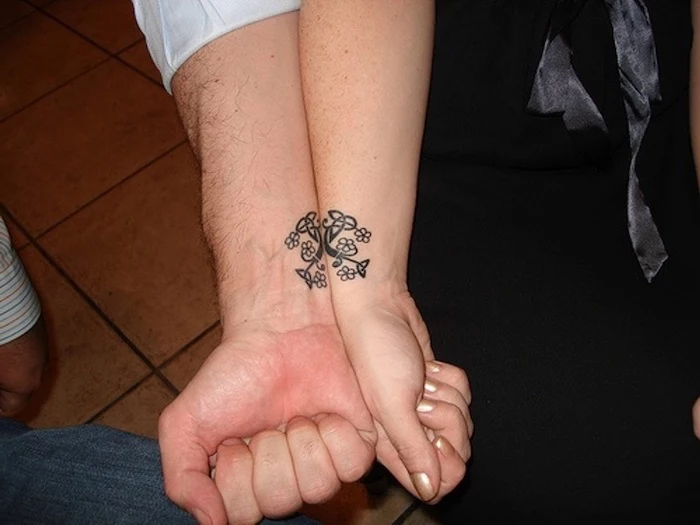
- Less cliche than matching designs.
- Allows for more personalization.
- Creates a beautiful visual metaphor when you’re together.
The concept? Duality tattoos. Think: a sun and a moon, a landscape split between two arms, a wolf and a raven, a brain and a heart. They are whole on their own but tell a richer story when united.
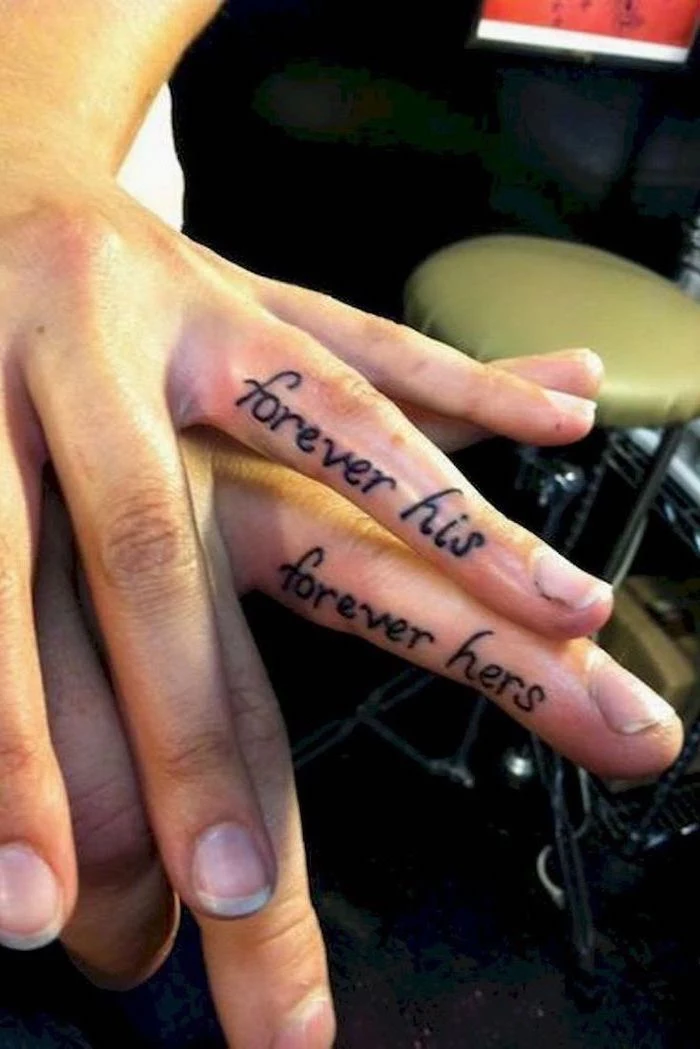
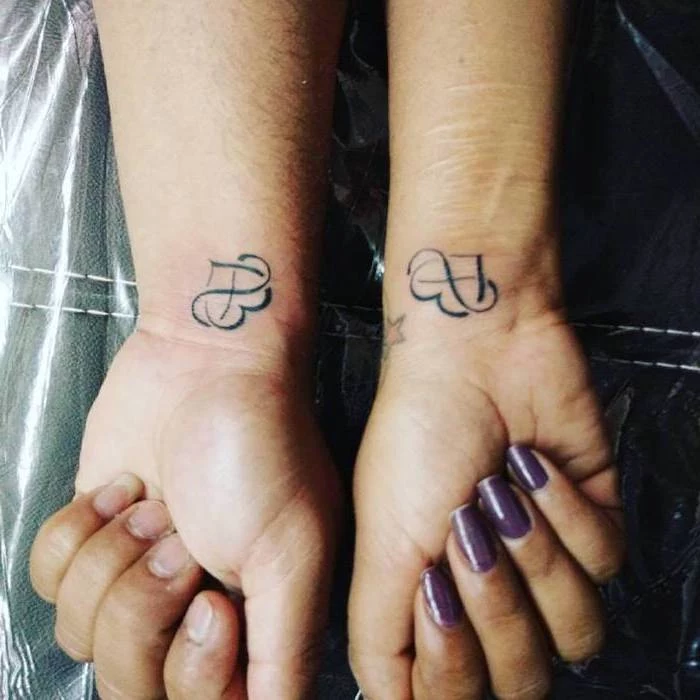
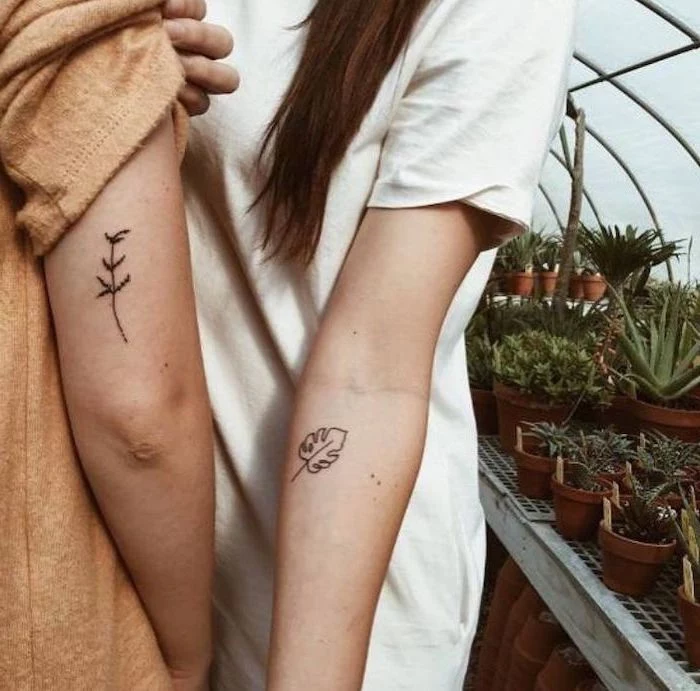
Important consideration: A tattoo is an investment. A good tattoo isn’t cheap, and a cheap tattoo isn’t good. When budgeting, remember you’re paying for two separate pieces of art. The price reflects the artist’s skill, hygiene standards, and quality of materials. For a permanent symbol of your love, this is not the place to cut corners.

